#like not man eating gigantic but like a small mammal
Explore tagged Tumblr posts
Text
Been getting really into spiders lately which I interesting cause I've always hated insects and bugs just like all of them. Even butterflies as pretty as they are creep me out a bit because of the whole flying around and being small thing. Like I don't like things flying near my face. Anyways though.
As a kid I HATED spiders like with the same passion that I hate flies. And then over time the more I hated flies the more spiders and I became a sort've enemies to reluctant team mates dynamic.
And really they're just cool on their own anyways. I was researching then to create a very specific tattoo idea for myself. And they have all these colours and names and meanings. And they're all over different cultures stories and music. Its just a very crazy phenomenon for me that through understanding and a manic plus tism induced obsession with research. I really have grown to respect spiders and they're probably actually closer to my favourite bug IF I had one.
I still want them to be in their own space and not in mine. And I will not hold one big or small.
But they're cool.
Three cheers for spiders. They hate flies as much as I do. And the enemy of my enemy is my friend

#spider#its also funny cauaeblike spiderman has been my favourite hero for...ever#so maybe this was destined man#look at this little guy in gif#i feel like if they were bigger id like them more#like not man eating gigantic but like a small mammal#i just dont like how bugs feel like they can sneak up on you an enter you and stuff#way more pro creatures that i can see with my naked eye and hold if necessary#not tarantulas though#still need time to work up to that#this has been a system post
0 notes
Text
❤️ Monsters in Latin America ❤️
Hello very good dear community of monsters lovers how are you? I hope you do well and if not I hope that your day will improve so that everything goes well.
I want to introduce you to some (not all as there are too many) lovely monsters of Latin America, I want to spread a little about my own culture and expand the repertoire of monsters to love, care for... Etc, I hope you like this bit Latin American story any questions you have about these creatures can contact me.
And I want to apologize if my English is very bad
Well without further ado, I introduce you to these lovely monsters from Latin America.
El Athrathrao o Basilisco

It is born in a henhouse, from a small round egg of coarse and rough cascara, of grayish white color, called lloilloy egg or lloe egg, which according to legend is believed to be laid and incubated by a rooster. If this egg is not removed, within a few weeks it will become a basilisco.
In the daytime, the basilisk chilote hides under the house of the owner of the henhouse, and at night he would come out of his hiding place while all the people sleep. At that time he would emit a hypnotic chant similar to cockcrow, which would cause people to stay asleep. After singing, he would go into the rooms to be able to feed himself, absorbing the breath and sucking the saliva of those who sleep. The affected person would lose the desire to eat, so he or she would get thinner and thinner, and his or her face would become pale. With the passage of time, a strong and persistent cough would appear and his breathing becomes more and more difficult, and finally he dies. The same thing happens with every one of the inhabitants of the house.
La Pincoya
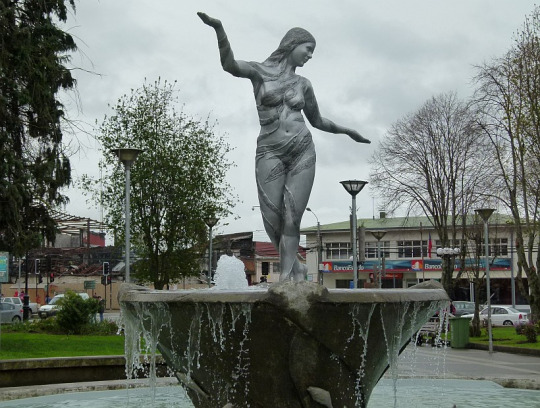
She is a mermaid of extraordinary beauty (with a slightly tanned white complexion and blond hair), whose job is to protect the sea, sow it and rescue the castaways.
When the pincoya dances facing the ocean, it is warning that there will be an abundance of fish and shellfish. And when you do it looking toward the coast, there will be shortages.
To be favored by it, one must be content; That is why the fishermen are accompanied by happy friends.
It is also said that if you fish or shellfish a lot in one place, the pincoya gets angry and leaves that area, which then becomes sterile. The pincoya is sometimes accompanied by her husband, the pincoya.
The mermaid lived in a huge cave and used to swim in the lagoon and the puchanquin river. From the rocks, with a whistle, he made emerge from the bottom of the waters a solid trunk of gold, which he climbed to comb his golden hair. Sometimes, during the night, he would sing haunted love songs, which no one could resist.
In addition, many people sought the woman for favors, until she disappeared from the place. It is believed that it was called cuada from the huelde lagoon to bring prosperity and abundance to distant beaches.
Since then, the waters took on the dark color they have today, and although many have tried to imitate the siren's whistle, the golden trunk is still submerged waiting for its owner.
El Muqui / Muki
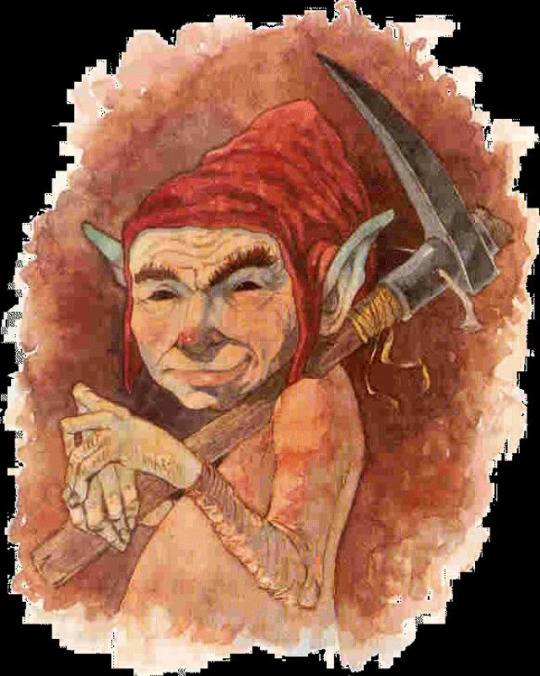
The muki, or anchancho, is a goblin in the mythology of the central andes in Bolivia, Peru, Ecuador, and Colombia; Which is characterized by being a miner and, as such, its existence is limited to the underground space: the muqui lives inside the mine.
Its name comes from the quechua "murik" (" he who asphyxiates "). However, 'muki' also means' humidity ', so it is said to also appear in places where there is water. From puno to cajamarca, passing through pasco and Arequipa, the descriptions of this creature are always the same: it is of small stature, does not exceed half a meter. Their favorite victims are unbaptized children, whom they hide in FIG and banana trees to make one of them.
Piuchén

Piwicheñ is a Mapuche voice that means "to dry people", this mythological creature is better known as Pihuchén, Piuchén or Piguchen.
It generally has the appearance of a flying snake, emitting high-pitched whistles. But also its changing appearance has something of a human, snake, bird, fish, quadruped, frog and bat. It is usually covered with grass, bushes and twisted cylinders, like hooked horns. It produces a substance so irritating that when it is transmitted through the air or water, it causes skin eruptions very similar to scabies.
It has incredible longevity, its wings grow when it has reached its mature age, in old age it transforms into a bird the size of a rooster or a young turkey, equally bloodthirsty. It has such a powerful force that it can topple large trees and raise gigantic waves that wreck ships.
He is used to living in lakes and rivers, where his presence causes panic, those who have the misfortune to contemplate him will soon die. At other times, he petrifies his victims with his intense gaze, and then sucks their blood.
Trentren Vilu y Caicai Vilu
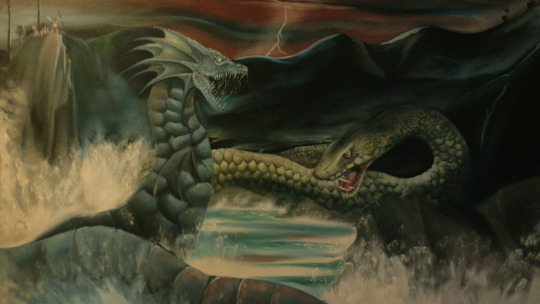
Trentren vilu (terrestrial snake) and caicai vilu (sea snake) are two colossal and powerful snakes that have the ability to cause earthquakes and volcanic eruptions (trentren) and tsunamis and floods (caicai).
Legend has it that one day caicai awoke from his sleep and, seeing how ungrateful men were to the sea that gave them so much resources, unleashed his fury and used his tail to cause tsunamis and flood the earth as punishment. Trentrain, however, came to the aid of the terrestrial creatures and saved those he could on his back to put in the hills, those he could not save he turned into birds, fish and Marine mammals and drowned in sumpall. Caicai, for his part, did not stop and raised the waters even higher, to which he responded by raising the hills even higher.
Seeing this challenge, caicai attacked trentrum, thus beginning a Titanic battle that lasted for a long time until they finally ran out of strength.
By the end of the battle, the geography had changed, resulting in the numerous islands and canals of southern Chile.
Exhausted and defeated, caicai returned to sleep, leaving millalobo as ruler of the seas. For his part, trentrum also went to sleep.
However, with the passage of time, the men became ungrateful again, also causing the displeasure of trentin, who from time to time moves in his sleep causing earthquakes and eruptions, while caicai by moving his tail causes tsunamis.
Yaguareté-Abá
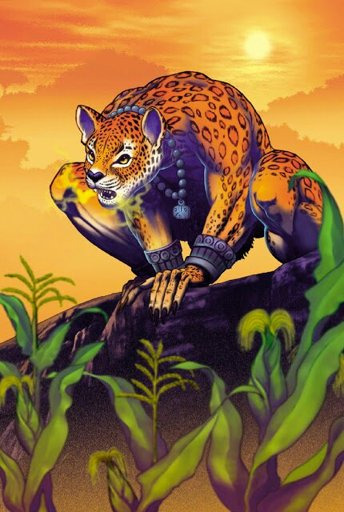
Tiger man or leopard-man, this being is a character known in northeastern Argentina and the great chaco, this arises from the great adoration of a sorcerer towards these animals and is based on the metamorphosis from human to beast, or the reverse.
The transformation of the sorcerer begins with the use of a jaguar leather and a sauma with hen's feathers. And that because of these they were given the power to shed their skins and transform into a creature half jaguar and half human. Later, they go hunting and after eating their prey they return to their human form performing the same procedure.
He is extremely aggressive and only eats human flesh, from mule or cow, he liked to loot ranches and he liked to force young women to clean it. The only way to escape from his escape is to manage to remove his hide and spit in his face because they are blind and vulnerable to attack, after death they return to their human form. This must be accompanied by bullets or machetes that are blessed but this is not all - you must behead him after killing him to make sure he does not come back to life.
La Fiura

She has the appearance of a disgusting woman, with large breasts and tiny stature (40 to 50 cm) and long black hair. Her face has hideous features, with sparkling eyes that are almost hidden behind her huge nose. Her limbs are thin and hooked, and she has the ability to lengthen and twist them in all directions by nervously moving the misshapen fingers of her huge hands. She wears red clothes, and uses to adopt strange postures and hideous grimaces with her face.
It is said that he wanders in the woods and sneaks through the bushes, in search of the fruit of the thorny chauras, which he eats gluttonously; and people can tell that the Fiura has passed through a place by observing the depositions it leaves on the protruding roots of large trees. It is also said that taking great care, it can be observed when she carefully combs her hair with a highly polished crystal or silver comb that shines in the sun's rays, while bathing in small lakes. After bathing, she sits on the moss, and remains naked for hours or goes to dance on the scraps. It is characterized by possessing superhuman strength and by the ability to make use of the stench of its breath to twist or break the limbs of animals or people who observe it; her power being such that she can have her effects at a distance.
Millalobo
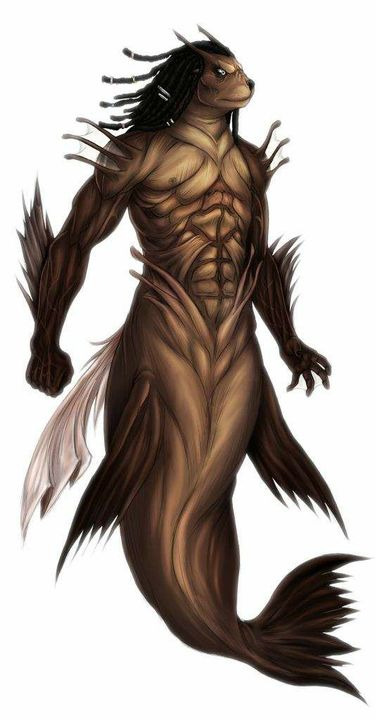
The millalobo (golden Wolf) is a creature resembling a newt, with the upper part of a man and the lower part of a sea Wolf. The millalobo was born from the union between a woman and a sea Wolf which saved her from drowning during the mythical battle between trentrain vilu and caicai vilu.
Millalobo is the most powerful being of the seas after caicai, who chose him to rule the seas on his behalf.
According to chilota legend it is said that upon seeing him, caicai decided that he was a creature of his liking and chose him to delegate his power and rest after his battle with trentrain.
Millalobo lives on the seabed and rules with his family, his wife huenchula and their three children; The pincoya, the pincoy, and the mermaid chilota. Various mythological sea creatures are under his command and help him in his tasks, which range from planting and caring for the development of shellfish and fish, to managing the Marine climate; In addition to guiding and caring for the dead produced by the sea.
Millalobo is said to be the creator of the caleuche and the evil creatures of the seas also pay him respect.
263 notes
·
View notes
Photo
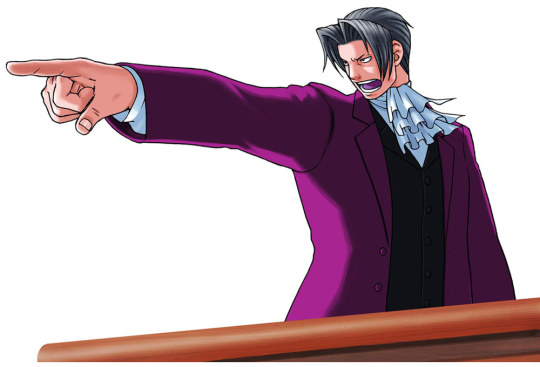


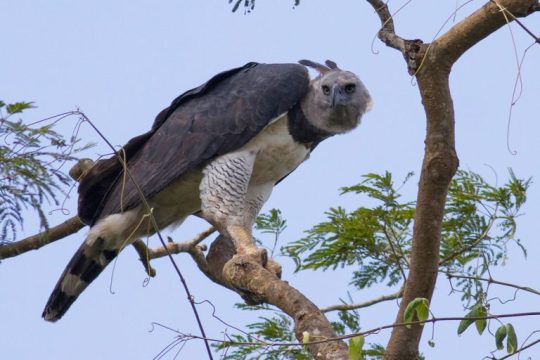

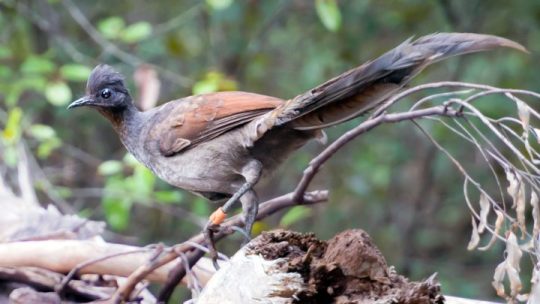

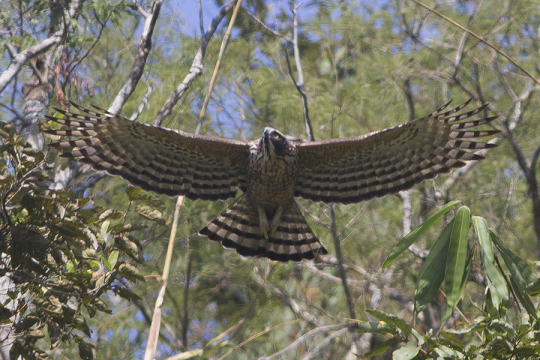

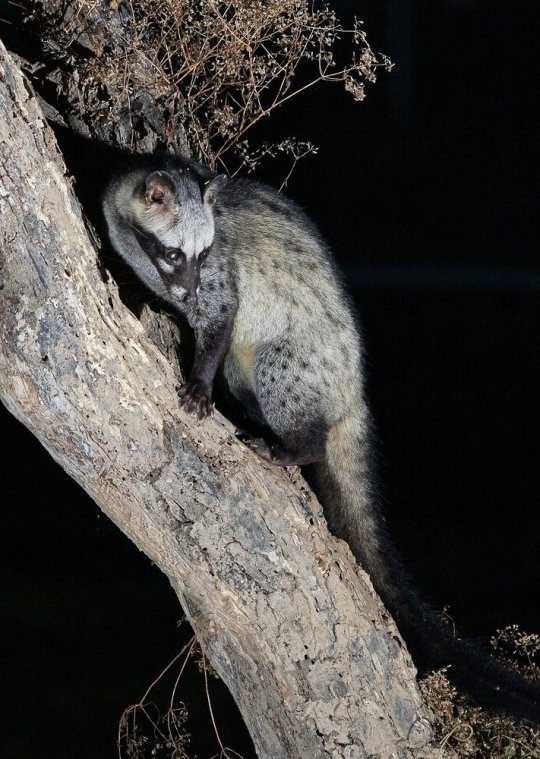
Ace Attorney Daemons - Prosecutors
Animal species and reasoning behind each choice under the cut, as well as links to other groups of characters!
Miles Edgeworth - Great Pyrenees. I originally started looking at big white dogs because I wanted to see if something similar to Pess would be suitable, and I think I found one. This breed is big and fluffy, which frankly I think would be needed for Miles growing up with the von Karmas. But honestly, his daemon is intelligent and powerful. Generally calm, but capable of leaping into swift action. However, it is at the same time at heart a protector (of livestock, traditionally) more than a predator. I think his daemon settling in this form when he is a teen would be a great way to illustrate his true nature, underneath all the Demon Prosecutor stuff (I expect he and she would be at odds for a while). Additional details I like are that these guys do tend to be more reserved with strangers and can be somewhat stubborn, and also they do shed a fair bit. I just enjoy the image of Miles having to constantly brush his gigantic floofball of a daemon and lintroller all her fur off his suits. A final thing, which I didn’t really intentionally plan, is that all prosecutors have bird daemons except Godot, who used to be a defense attorney, and Miles. So he stands out a little bit there, which I think works well too - he would be all the more determined to prove himself as Bratworth once his daemon settled in a form atypical for the profession.
Franziska von Karma - Harpy eagle. I put Manfred in the villains list since there’s no space for more prosecutors here, but it just seemed fitting to me that von Karmas typically settle as eagles. They are sharp-eyed predators, generally solitary, and look incredibly fierce, just in general. As for the harpy eagle in particular - they are huge, first of all; their claws are the same length as brown bears’. They are among the largest eagles in the world, and sometimes considered the most powerful. This seems only right for Franziska. They mostly eat monkeys, but can go after pretty much anything as they are at the top of their food chain. They can fly nearly straight up and turn their head upside down, and wait nearly a full day to snatch their prey. Franziska too is maneuverable and ridiculously determined. The head-feathers you can see slightly lifted in the photo are pretty cool, too; they rise up into a distinctive crest when the eagle feels threatened, and it actually looks a bit derpy. Which reminds me somehow of Franziska’s scornful “fool” name-calling and how it can often get to the level of absurdity. They are monogamous and fiercely protective parents, which I think can be a nice match to how Franziska really isn’t so heartless after all. And another detail that fits really nicely with her initial rivalry for Miles is that harpy eagles usually lay two eggs, but typically only the first-hatched survives. The other is ignored or even killed by its older sibling.
Klavier Gavin - Superb lyrebird. Female lyrebirds don’t look nearly as impressive as the males, and they don’t do the dramatic dances either. But they are still incredible vocalists, able to imitate sounds from at least 19 other species. And their songs tend to be mostly used during foraging and defending their nest, as opposed to attracting a mate. Obviously Klavier needs a songbird for his daemon, but I think the female lyrebird specifically is great because of those details. Her less exciting (though still pretty) plumage might not match his outer image, but he is one of the best prosecutors of the series, dedicated to the truth from the very beginning. He’s a lot more serious than he might come across, and his daemon reflects that. The typical songs match up with that too; he loves music and his daemon does too, but it’s not what either of them care about most, and the subject of typical female lyrebird songs show that well. Similarly, though a bird like most prosecutors, his daemon is not a bird of prey. He’s never really been in it for ‘the hunt’, after all. One last reason I like the lyrebird for him is that, contrary to most daemons being quite around people they don’t know well, I suspect his daemon would be fairly vocal and probably sing with him in his band.
Simon Blackquill - Japanese mountain hawk-eagle. Before you ask, yes. Yes I did choose his daemon from birds who look most like Taka. I mean, of course. The wiki listed three, and I looked them all up and thought the mountain hawk-eagle appeared closest. As a bonus, it has a Japanese subspecies, which is fitting for samurai man here. They tend to be quiet most of the time, though they have a distinctive cry. This seems fitting for Simon, as he is generally not super talkative. They hunt their prey from a perch, going after small mammals on the ground or other birds, so the perching on his shoulder all the time doesn’t have to change either. Another fitting detail is that females are extremely defensive of their nests and young, apparently willing to fight to death to protect them instead of getting scared away. They also watch and feed their young for a while after they could be self-sufficient. This fits so well with Simon’s willingness to be put to death to protect Athena, obviously.
Godot/Diego Armando - Asian palm civet. I took a slightly different approach for his daemon, and just googled animals that eat coffee. But I’ll get to that in a minute. First, they are nocturnal, solitary, and can just be hard to locate. This fits well with Godot’s whole ambiguous/mysterious thing he’s got going. They’re good climbers and quite nimble/speedy but still vulnerable to predators. Fitting, I think, since he was caught both as Diego and Godot. He tends to be clever to a point but then make a fatal mistake. They also are pretty adaptable, getting used to urban life quickly, which can relate to him adjusting easily to becoming a prosecutor. However, I would be lying if I said the main reason I like this daemon for him wasn’t because they eat coffee. More than just that, the coffee cherries (of which they are said to select only the best) get fermented in their guts, and when they’ve been pooped out, are used to make a very expensive coffee called “kopi luwak.” Now, granted, when I looked this up it seems that the result doesn’t taste especially good and is pretty much just famous as a novelty thing, but I think Godot’s daemon would enjoy coffee just as much as him, and I find the fact that he could, um, prepare his own if he wanted, hilarious.
.
Detectives, Feys, Misc. Lawyers, Villains, Witnesses, Wright Anything Agency
#ace attorney#miles edgeworth#franziska von karma#klavier gavin#simon blackquill#godot#daemons#aa daemons
39 notes
·
View notes
Photo






There is evidence that the oceans have suffered at the hands of mankind for millennia, as far back as Roman times. But recent studies show that degradation, particularly of shoreline areas, has accelerated dramatically in the past three centuries.
Common man-made pollutants that reach the ocean include pesticides, herbicides, chemical fertilizers, detergents, oil, sewage, plastics, and other solids. Many of these pollutants collect at the ocean's depths, where they are consumed by small marine organisms. Scientists are even discovering that pharmaceuticals ingested by humans but not fully processed by our bodies are eventually ending up in the fish we eat.
Because of ocean pollutants there are areas where little or no marine life can exist. Scientists have counted some 400 such dead zones around the world. Solid waste like bags, foam, and other items dumped into the oceans from land or by ships at sea are frequently consumed, with often fatal effects, by marine mammals, fish, and birds that mistake it for food. In certain regions, ocean currents corral trillions of decomposing plastic items and other trash into gigantic, swirling garbage patches. (Source)
Here are 10 things you can do to save the oceans!
Spread the message about keeping our oceans clean! Do it for the mermaids! You can order a shirt here.
4K notes
·
View notes
Text
Updates
Well.
It’s my 21st birthday today.
I’ve been very quiet here since winter, but in actuality so much has happened. I’m still sorry for being-here but not-being-here, and vanishing on everyone waiting on art, but it’s really been a whirlwind. Just a real wild ride.
I had this big, rambling post written up, explaining what’s happened so far this year and what’s been going on, but I don’t think it’s necessary really. What matters is that I’ve made it this far. This time six months ago I really wasn’t sure if I’d make it to see today. But. Here I am.
I feel like life has been pretty unrelenting in the past few years, and it never seems to end. Between this post and my last text posts, I’ve had another Break Down due to problems with work and doctors, and it’s been pretty terrifying, but I think it’s going to be okay. We’re not out of the woods and I really need to focus on this right now so I still won’t have time to get back into art (which I do plan on doing!! But it’s really not fair to anyone for me to start up again when I’m still not completely stable) and everything else.
But hey. Even after that recent disaster, I’m still here. I’ve been on much better meds for almost 5 months now, I’ve been figuring out what I want to do with my life, and I have my second wind. Things have been getting a lot better (even though a LOT has also been going wrong, but such is life, and we get through it!) and I’ve been on the right track for several months now. I think I’m truly happy.
I’m still here and so is most everyone else. I figure it’s about time I do an update on everyone, as this is a pet blog after all, and I think it’s best to let everyone know how we’re all doing. It’s been a long time since I really talked about everyone properly, and a lot has happened. So here’s the all-encompassing update on everyone:
INVERTS
I posted about this a bit before, but yes. At the start of July I found that I lost about half of the tarantulas. While I think in general we were doing okay picking up the pieces from everything that happened, not everyone was alright. It’s my fault, and I take responsibility. I don’t care how tough things were, it wasn’t fair to them that I let them go unnoticed for too long. Most of the slings passed away, they got too dry, and the more moisture dependent ones passed away as well, including Boopus, Conte, Lucy, and Cassini.
There is a huge hole in my heart from losing them. I will never let this happen again. I don’t CARE how hard things get for me, I will NEVER let my illness take the lives of the ones I care about ever again. I don’t know if it’s the right decision to continue keeping Ts at all after what happened, but since it did, Jessie and I had a very serious conversation about was has to change if I want to keep the remaining Ts. I’ve spent a lot of time re-working how I care for everyone, and so far, everyone has been recovering VERY well. The remaining Ts are: Agnes, Deckard, Isidore, Montag, Winnipeg, Wilder, Flaveri, Kessler, Kitty, and Turnip. They are all fat and hydrated and doing better. Deckard and Isidore molted successfully, and Winnipeg is deep in pre-molt. Montag had some sort of weird kinda-mites-but-not-mites thing going on, but I got most of them off and they’ve been doing really well for about a month now.
Suffice to say I think everyone is going to be okay. The ones that are here. I do love them deeply and I need to not let my illness get in the way of them. My depression was slowly eating away at everything I loved, including them and my desire and ability to care for them, but I will never let it happen again. No matter what, I’ll do what’s best for them, even if it’s a tough decision.
As for the other inverts...the roaches are all doing very well. Red goblins have had their ups and downs but the colony is big and thriving. I finally have adults again and babies are cropping up once more. My dubia colony is finally stable and they’ve been delightful waste disposals for all the ugly peppers and bolted greens from our poor little garden. The rothi, the Original Dig Sons, are STILL kicking. I thought the female was gone but she cropped up again and is as gigantic and cute as ever. They’re chubby and happy and digging like champs. The little kenyans are also doing well!! I’m moving them in with the dubia and they seem to thrive with them. Everyone is peaceful and passive to one another, and by being in the bigger colony they have much more space and food options than before.
All in all, the inverts are recovering and doing okay. I also have thriving isopod cultures in the geckos’ vivs, and they’re doing very well! Lots of orange P. pruinosis in there.
REPTILES
Vladimir and Estragon are doing WONDERFULLY. After the fire I was very worried about the smoke, but both geckos have been perfectly fine and very active and healthy, especially as the weathers warmed up. Estragon is exploring all the time now, and has recovered well after all the stress of moving around so much earlier this year. As I type this he’s climbing the glass of his viv and mleming the air. He’s such a little man and I love him. I’ve been watering the vivariums properly again and they’ve been exploding with growth! Not all the plants made it but the ones left actually need trimming, they’re growing too fast!! The local pet place has lots of vivarium plants available actually and I got a couple that I’m going to plant in the empty spots for the boys. So right now the vivs definitely look a little wonky, but it’s nothing we can’t fix, and the boys themselves are doing GREAT. They lost a little weight after all the chaos, but Gogo is a good chunky boy and Didi is doing awesome too!! Eating lots and he even catches the loose roaches that have been living in the leaf litter, which is pretty cool to watch and great enrichment for him. My little men have been doing so good and I’m so happy that we’re all okay. <3
MAMMALS
Before the fire, I had recently gotten my very first rats, which was a huge deal on here, if any of you remember that!! Java, Lisp, and Python have been thankfully 100% okay after the fire, and have suffered 0 smoke injury! They were farther from where it happened, but there was definitely some smell in my room but now, eight months later, I think it’s safe to say that they’re unaffected. The rats are doing GREAT. They get pampered every single day by everyone here, and my roommate LOVES them. Even when I couldn’t take care of them, he’d feed them and squish them daily, which was a huge help while I dealt with all the craziness. I’m getting back into the routine and taking over their care again, but I can’t thank him enough for his help.
The rats are now THE BIGGEST BOYS and Java is the BEST bean!!! He went from peeping and running away when we first got him to bruxing like CRAZY whenever we hold him and he loves being squished. I don’t know why. They all just love being held and squished and Lisp has some really unsettling Extreme Happy Boggles when we do it, he loves being crushed. (Not that we actually “crush” them, just gently pretend to squish them with our hands while joking about squashing them into pancakes)
They get so much love every single day, and they’ve been one of the best things to ever happen to us. Unfortunately since moving here (and I wasn’t aware of this until the day of move-in, haha, lucky me...) they’ve had to live in the basement which is colder than I’d like and makes it hard for me to care for them, but soon we’re switching to 100% fleece and they’ll be able to live up here with us properly!! I’m so excited about it and it’ll make caring for them so much easier. I’m so excited.
OH and how could I forget. I put off saying this but we DO have a few more pet friends since I last mentioned everyone in December. We bought five little mice into our home many months ago, and their names are Awesome Opossom, Moggles the Mole, Inspector Beans, Bhombus, and Trungalo. They were one of the best things ever, for me. They’re the perfect fit for our lives and they’ve been thriving since we got them. They’re so relaxing and wonderful, and they are incredibly calm and squishy little girls. Sadly, Possie passed away a month or so after she came here (she was almost like a FTT...she was doing so well, then she just...she wasn’t growing like everyone else, no matter what I did, and one day she just. Didn’t make it. We found her snuggled up in her favorite hide in a pile of fleece. No one bothered her. She passed away peacefully.) and she just...she was here for such a short time but she changed everyone’s lives forever. She was the most incredible little thing. She was so outgoing and sweet and when we bought them home she instantly became Nick’s favorite little friend. I’d come home from work and he’d be in the middle of the living room playing with her. He loved her so, so much and even though the mice “are mine” I really think Possie was his. She was a very special little thing and I’m glad she could spend the last of her time with us. She was an incredible little animal.
All in all though...the rodents are doing good. It still hurts my heart that Possie passed away but we did everything we could and we had a special little service for her under the big tree in the backyard, and we will never forget her. I kinda wish everyone here could’ve gotten to know her too. She was really something special.
Otherwise...ahh gosh it feels really sad to say anything else after talking about Possie. She was so, so wonderful, but so are the remaining meecers. Mice are weird. They’re just so small and gentle and wonderful, and I’m really happy to have them with us.
Oh yes!! And there are two more little friends who joined us. I researched getting birds for a few years, and back in mid-April in my area there was a couple having to rehome some of their button quail. They hatched and raised them by hand, and I talked it through with Jessie and we jumped on the opportunity to adopt a pair. It worked out wonderfully for everyone and now it’s been about four months with us and they’re doing fantastic. Their names are Wasabi (male) and Mushroom (female) and they’re an extremely devoted mated pair and we love them. They’re in our front living room and while we don’t/can’t handle them they have become so outgoing in their own way and I’ve learned so much about caring for them over the past few months. They’re very relaxing to care for and any time I slack a bit with anything, they let me know by tapping the front of the enclosure until I investigate and fix whatever’s wrong. It’s actually really helpful and over time I’ve gotten much better and now they hardly ever pace or tap the front, which makes me feel like I’m doing something right. They seem peaceful and spend a lot of their time with each other and bathing in their dirt bath or foraging for treats. c:
All in all, we’re really getting there and have been getting so much better since The Disaster that was winter. The animals are doing great/much better, I’m getting better (although the recent scare is still a drain and I do have to work 12-9 pm today but so it goes...) and it’s going to be alright, I think. And I have a very supportive partner and awesome roommate and friends and I can’t thank them enough for helping me get this far. I wouldn’t be here without them.
Well anyway. Happy birthday to me, I spent way too long writing this and now I need to rush to get ready to work for the rest of the day/night. But so it goes, I’ve been through worse. c;
#update#personal#animal update#my pets#i gotta post pictures sometime of everyone#just a bit embarassed cause the vivs look kinda ugly right now#some plants are gangly and others are growing like weeds and it doesnt look very professional#and the rats are unfortunately in the basement right now which doesnt look very nice...#i hate having them down there and its made everything a lot harder but soon theyll be up here again and itll be a lot easier#and better for everyone#also bless nick for being so awesome and helping with them#he really loves the rats and on the days im working until 9 pm hes a huge help#he feeds them and gives them pets and picks them up every day#and soon when theyre up here itll be even easier to just. Pick Up a rat and hang out with them#itll be good#ohh and i gotta show everyone the meecers#theyre SO GOOD such good friends#theyre all angora and suuuuper soft and wonderful#theyre really entertaining and calming to play with and take care of#i love the rats and i love the mice and i love the geckos and the quail and the Ts and the roaches#BUT NO MORE PETS FOR A WHILE.#HOO.#im VERY HAPPY with my limit right now and i dont want to go beyond this until like. im 1000% stable and good for a while!!!#anyway wow i ramble a lot#happy birthday to me#long post#text post
2 notes
·
View notes
Text
Another review of a shitty article.
Barely a day ago I noticed yet another shitty article written by an animal rights activist trying to smear the farmer Jenna Woginrich, and it’s written by notorious steppelord Gary L. Francione no less! Today I finally sampled enough bravery to try to brave the dumpster-fire that is his thoughts and opinions.
Let’s begin.
“Jenna Woginrich, supposedly a former vegetarian/vegan (she has used both terms), has been aggressively pimping “happy meat” for about five years now. She claims: My beef, after all, wasn’t with beef. It was with how the cow got to my plate in the first place. One way to make sure the animals I ate lived a happy, respectable life was to raise them myself. I would learn to butcher a free-range chicken, raise a pig without antibiotics and rear lambs on green hillside pastures. I would come back to meat eating, and I would do it because of my love for animals.She advises those who care about animals:If you really care about the humane treatment of livestock then I strongly suggest you eat them.“
I just wanna say, I don’t really agree with Woginrich here. Not everyone has the opportunity or skills to start becoming a farmer, but otherwise I don’t really have that much of a problem with what she is saying.
“Ms. Woginrich has a new essay: An Open Letter to Angry Vegetarians.It starts: This is a letter for the angry folks who think not eating meat makes them morally superior to those of us who do.Oh, oh: we can see where this is heading.She goes on to tell us that she was a vegetarian/vegan (she uses both terms) for nearly 10 years, a PETA supporter, and “animal activist,” but has decided that all food involves killing because animals are killed in plant agriculture and harvesting, and growing crops involves other harms, including war, so she produces and promotes “happy” meat. “:The simplest backyard salad from your own organic garden to the fake bacon in your shopping cart — both take lives. I have simply chosen to take lives in a way that causes the least amount of suffering and causes the least amount of wasted global resources. And yes, it means there is blood on my hands now.The truth is there is no meal we can eat without killing. None. A trip to your local grocery store for tofu and spinach may not include a single animal product but the harvesting of such food costs endless animal lives. Growing fields of soy beans for commercial clients means removing habitat from thousands of wild animals, killing them through deforestation and loss of their home. Eating meat you raised means eating food infused with integreity [sic], sweat, loyalty, determination, love, friendship, memories, loss, perserverance [sic] and respect.And none of these things are ingredients you will not find on a package of tofu no matter how close you look.”
“And Ms. Woginrich complains that those who disagree are violating her human rights:Eat in whatever way invokes respect and gratitude in your soul. Be grateful we live in this time of contrived and soon-to-be over luxury and abundance. But do not come to battle here, accusing those of us raising good meat of murder. Those are fighting words, unkind words, and for someone so intensely passionate about treating animals well you seem to have no issue treating human beings like crap. I’m an animal, too. I would appreciate some ethical treatment.
So what is there to say about Ms. Woginrich’s position? I could say a great deal. But I think four comments will suffice. First, and as a preliminary matter, Ms. Woginrich should not confuse disagreement with “anger.” It is very common these days for those who are criticized for promoting animal exploitation to whinge about being “attacked” or “bullied,” or lament their status as victims of “anger.” I certainly agree that people should not address Ms. Woginrich in uncivil ways. But disagreement with and reasoned criticism of Ms. Woganrich, who is profiting from exploiting and killing animals, and who is actively promoting animal exploitation, does not amount to incivility or anger.“
You don’t know her life, mr Francione. I mean, many, many people including farmers like her have been harassed by militant vegans. One friend of mine has literally been accused of being a murderer for working on a dairyfarm, and another was given death threats from a vegan petfood company for merely pointing out nutritional inadequacies in their products. With that in mind, “anger” could very well be a massive understatements.
“ Second, Ms. Woginrich has no clue about basic ethical reasoning. She appears to think that morality is a matter of personal preference and nothing is inherently morally wrong. People may be put in jail for killing other humans, but that’s just a matter of a legal convention. There’s nothing inherently morally wrong with intentionally killing a human. “
I mean... Almost nothing is inherently morally wrong excluding things like rape, bigotry and genocide. Killing can be done in self-defence, lying can save lies and stealing an apple for a starving child is barely a crime in my opinion. So I don’t even get what you are trying to go for here.
“ I suspect that this is a good part of the reason why Ms. Woginrich sees herself as victimized by disagreement. If she sees fundamental moral issues as involving nothing more than a preference, then it would be natural for her to think that disagreement, including substantive, principled, and reasoned disagreement, is an expression of “anger.”
Hmmmm. (grumbling as I think about everything shitty an ARA has said, including death and rape threats against hunters and farmers).
“ I note that her blog says that we can look forward to see her writings about the Civil War. Given her moral subjectivism, I will be curious to see if she defends human slavery as well. After all, on Ms. Woginrich’s view, the morality of human slavery is just a matter of preference. There’s no moral truth there.“
Comparing animal husbandry to slavery, how nice. No, mr Francione, that is never justifiable in my opinion and I will tell you why: neither veganism nor vegetarianism are universally feasible. Not just because of substinence hunting in developing countries but also because of diet restrictions and eating disorders making changes in diet nearly impossible and the dozens of ex-vegans you can read about online. And animals unlike humans do not have a concept f ownership, they cannot think about the implications of being owned property. Therefore, comparing farming animals to slavery is something that is never justifiable.
“And if Ms. Woginrich maintains that there is moral truth where humans are concerned but not where nonhumans are concerned, then’s she is merely another speciesist who begs the question from the outset and engages in circular reasoning. So, without saying more, if you don’t accept moral subjectivism (and no one does except when they are thrashing about continually trying to convince themselves that exploiting the vulnerable is morally acceptable), and you reject speciesism, then Ms. Woginrich’s position collapses.“
circular reasoning my ass. You radveegs are much more guilty of “circular reasoning” and I will hsow you someone who explains that much better than I can: miss @avatar-dacia
The only people who do not accept the fact that morality is subjective are usually WBC-type christian fundies or radveegs who never accept that their diet is not feasible for everybody.
“I should add that Ms. Woginrich seems to think that murder, as a legal term, involves killing with “malevolent intent” and that deliberate killing done with “gratitude,” “respect,” and “love” is not the requisite culpable mind state for murder. That’s wrong. Murder involves killing a human in a premeditated or deliberate way. The mercy killing of a loved one suffering from a painful illness done out of love and compassion is premeditated killing and constitutes murder. And Ms. Woginrich clearly is killing animals with premeditation even if, as she rather incredulously claims, her heart is overflowing with “gratitude,” “love,” and “respect” for the nonhumans she exploits and kills. This is, of course, not to say that Ms. Woginrich is guilty of murder because murder is a crime defined to involve humans only. But her claim that her mind state in killing animals is not the mind that would allow for a conviction of murder if a human were involved is, like most of what else she says, wrong. “
The precise legal definition of murder varies by state and country, but I am pretty sure that legal euthanasia is not murder in most lawbooks. Even if it was, there’s still a GIGANTIC difference between animal husbandry, euthanasia and murder. Also, what I find really goddamn sick is your insinuation that slaughtering an animal for food makes one a possible murderer or “psychopath”. Literally thousands if not millions of people grow up helping their family butcher an animal throughout the world, and most of them will never kill a human. My maternal grandfather was the kindest man I knew, and he grew up butchering animals. He is not a “serial-killer.”
“Third, Ms. Woginrich’s argument in a nutshell is: we can’t live perfectly so it’s fine to kill nonhumans. But that’s just silly. I agree that living involves indirectly harming nonhumans and humans. When we build a road, we know that some humans will be killed on that road. Does that mean that there’s no difference between building a road and intentionally killing humans? Of course not.
I agree that everything we consume involves indirect harm to nonhumans and humans, and that we all need to consume a great deal less. But does the fact that the manufacture of a product may have resulted in the negligent death of a human or nonhuman mean that there’s no difference between that negligent death and an intentional killing of a human or nonhuman? Of course not “
Pesticides are literally used to intentionally kill insects and small mammals considered “pests”. Vegetable and crop farmers will pay trappers to capture and cull raccoons and deer to stop them from eating their produce. Those deaths are not “negligient”.
“ I agree that the harvesting of crops involves unintentionally harming animals and humans who are killed or injured in the agricultural process. But if we were all vegans, there would be many fewer acres under cultivation. Professor David Pimentel of Cornell University has written that livestock in the United States consume 7 times as much grain as is consumed by the entire U.S. human population and the grains fed to livestock could feed 840 million humans who had a plant-based diet. “
From what I have seen, cattle are usually fed crop byproducts, things humans don’t want to eat. I actually found a good study on this. But your assertation is still not really relevant here, if we are comparing one person being a substinence-farmer to vegans eating commercial crops. And cattle do not need to be fed crops, pasture is a thing although feeding animals by-products from plant agriculture could actually be a good way to lessen food waste.
“Should we do everything possible to avoid any unintentional nonhuman (and human) deaths that occur during harvesting? Of course. But does the fact that unintentional deaths will occur however careful we are mean that intentional deaths of nonhumans and humans are morally justifiable? Of course not. And if we all took veganism seriously as a fundamental moral issue, would we develop better ways to avoid that unintentional harm? Of course we would. Ms. Woginrich proudly proclaims that the animals that she raises and kills are being fed with “local non-GMO feed grown by our neighbors.” And do her neighbors harvest that feed without unintentionally killing animals? No, of course not. So she’s participating in the unintentional deaths and the intentional ones. It is clear that her position–that unintentional deaths cannot be avoided so the intentional ones are morally acceptable–is frivolous on this basis as well.“
In my opinion, becoming a substinence-farmer and raising your own animals for food is not evil nor wrong, because veganism is not universally feasible as I said earlier. And technically, someone who consumes only local produce and products whether they are vegan or not is probably causing less harm than a vegan who consumes exotic fruits and vegetables picked by underpaid workers. Meaning that Woginrich is actually trying to avoid nonhuman and human harm by being a farmer.
“ Ms. Woginrich even has a “donate” button on her page. That makes perfect sense. The whole happy exploitation movement is about buying indulgences for engaging in morally unjustifiable behavior. So I don’t blame Ms. Woginrich for cashing in as well. “
Or you know, since female ranchers usually don’t make that much money, she is just low on cash.
3 notes
·
View notes
Text
amazon Headquarters
If you're venturing to a part of the world with the most unique species of animals on the planet, you're, probably in for some interesting, finds, join us as we explore some of the most bizarre amazon discoveries Cayman to begin things. The apex predator of the Amazon River is a strange and terrifying creature, but by no means is it safe from other predators. In this intense jungle, the black caiman is essentially a gigantic alligator. These beasts can grow up to 20 feet long and they're much heavier than Nile crocodiles. Their diet consists of well everything, monkeys, piranhas, deer and even anaconda are all on the menu. These prehistoric predators are also partial to people, but not exactly in a good way. In 2010, a biologist that was cleaning a fish was attacked by a caiman living below her house, and while she was able to fend it off, it wouldn't leave empty-handed taking away one of her legs as a prize. Apparently, the brood had been under her houseboat for over eight months, just waiting, hungrily welcome to the Amazon, the green anaconda, with all of the biodiversity and incredible variations of flora and fauna in the Amazon. It'S not actually surprising to find that the largest snake in the world calls this place its home. The green anaconda is not strictly speaking, the longest snake in the world, but it is by far the heaviest females are generally larger than the males and they can reach up to 550 pounds growing over 30 feet in length. Also, the creature is just 12 inches in diameter, so while it isn't the longest, it's a pretty formidable snake. The good news is, however, that the green anaconda is not venomous. The bad news is, it can still pretty easily kill large prey like deer came in and even Jaguars anacondas will use their immense weight along with their strength in order to suffocate and crush their living meals. Now it may be hard to picture a 30-foot snake sneaking up on you, but they use stealth in order to hunt their prey. They are a Palma. Now, if you're worried about swimming in piranha infested waters, you want to reevaluate your list of fears with this next discovery. The ara Palma is a carnivorous fish that takes up just a little bit more space than a piranha. Does these behemoths can grow up to nine feet long weighing about 200 pounds? The ARA Palma is encased in what appears to be armor like plating, so it doesn't really have a whole lot of fear of anything in the river they mostly feast on fish and birds and are forced to float near the surface of the river to breathe air. As well as water now, if you weren't scared enough already, these fish are actually so intense and monstrous that even their tongue has teeth the giant otter. When you see a family of otters playing around in a river or even the ocean, often you may think. Oh, how cute this is at least partly because otters tend to be small. The Amazon, however, is home to the largest species of this marine mammal, the aptly titled giant otter. The name really says it. All males can grow up to six feet long and the adults of the species eat up to nine pounds of food every day. While this may still seem adorable. These animals actually hunt in packs and have been seen eating a giant anaconda and a five-foot caiman. So maybe less adorable and more vicious than you would imagine they are getting more rare, as human intervention threatens their way of life, but these capable hunters are still known to the locals as the river wolves, the Candiru, not everything, that's terrifying in the Amazon is giant, Though, admittedly, most creatures are the can do or tiny parasitic fish that work to latch themselves onto a larger fish's gills in order to feast on their blood, they use their sharp spines to hold themselves in place and the bigger fish can't get them off. This is all well and good, and may not seem like such a big deal, but there's more to the story than meets the eye. There is at least one documented case of a can darou launching itself up a man's urethra while he was urinating and the spiny fish got lodged in the tract at the time of emergency surgery. It was attempting to burrow into his testicles. It'S probably at this point that we should stress that this incident is very rare and it may stop you from using the Amazon River as a toilet, bull sharks. When you're spending all of your time worrying about the dangers of the Amazon, you may not get the full experience of the beauty along with the importance of the river, but you also might not be expecting a killer from the sea. Bull sharks actually live in the Amazon River. They can be found as far up the river as Peru, 2,500 miles away from the ocean. The bull shark special kidneys are able to alter the salinity of the surrounding water, which allows these unique predators to survive in fresh water. They also tend to reach about 11 feet in length and can weigh approximately 700 pounds. Not surprisingly, the tremendous fish are some of the more frequent attackers of humans and they tend to live near densely populated areas with its multiple rows of razor-sharp teeth and its proximity to towns and villages. The bull shark is considered one of the most dangerous sharks on the planet: electric eels, okay, so now you're getting concerned about being bitten and strangled and crushed, but another much less conventional thing to worry about with regards to the Amazonian wild is electrocution. That'S right! There are electric eels in the Amazon River and they pack a punch. These eels are relatives of the catfish family and can grow up to eight feet. Long they're, electric output has been measured to be about 600 volts and they generate this charge from specialized cells. The voltage is about five times the power of a typical electrical socket and can knock over a horse now, while 600 volts isn't usually enough to actually kill a full-grown. Human. Multiple shocks can quickly lead to respiratory failure along with heart attacks, also you're getting this kind of shock while inside of a River. Now it's not uncommon for people to be stunned after an eel attack and well just simply drown. Imagine just trying to swim in the Amazon after getting multiple shocks of 600 volts. There are a large number of disappearances in the region that have been attributed to eels, but whether they were attacking or just actually scared and surprised is actually unknown. The glass frog camouflage is a useful survival tactic for creatures that get fed upon, but sometimes in the Amazon. This technique leads to some interesting consequences. The glass frog is technically green, but if you were to see the specimen, that's probably not the first thing that you would believe the skin of the glass frog, as the name suggests, is entirely see-through. Looking at it from the underside, you can see all of the frogs internal organs working away, the heart pumping blood, the stomach digesting, and these strange creatures can grow up to 3 inches in length and have been known to eat their young. While this isn't actually unusual in frogs, the optics involved in this familial violence verges on something from an MC Escher painting the decoy building spider when threatened many creatures on the planet are likely to make themselves look big that way they can scare away their would-be predators. Cats will raise their backs, some lizards will flatten themselves. Even humans are told to look big when faced with bears it's a tried-and-true method and it's also somewhat related to the decoy building spider, but naturally it takes things just a little bit further. The recently discovered spider is thought to be of a species. That'S never before been seen and is actually only about 5 millimeters in length. However, it doesn't stop it from scaring off bigger, bugs the technique it uses to construct a giant spider shape out of dead, leaves and debris, makes the decoy complete with multiple legs and an abdomen. Thus, it seems like a gigantic spider is actually living in the web, but it's actually all just for show. The fascinating and brilliant work of nature is now being studied at research center, but very little is known of the tiny craftsman piranha, no matter where you go in the world, it's hard to beat the classic of bizarre discoveries. The red-bellied piranha is the original fear in the semi deep river and, despite all of the Hollywood hype, these little guys aren't exactly all as bad as they seem. When we say little, they do grow to be 12 inches long and hunted packs, but as for danger, they've got hilariously sharp teeth that interlock for maximum rending and tearing power. Usually, though, piranhas are actually just scavengers and they tend to eat things that are badly wounded or already dead, but what they do to their prey is the stuff of horror movies. A feeding frenzy of tens of these organic hacksaws will skeletonize their unfortunate food source in just a matter of minutes now. Attacks on humans do happen, but it's incredibly rare and usually linked to a provocation or starvation. The jesus lizard many creatures that are discovered in the amazon, walk and many live in the water, but very few do both at once. The affectionately, titled Jesus lizard is one of the more strange inhabitants of this wild Wonderland and it's truly a sight to behold. Also known as the common basilisk, the Jesus lizard is also named because it can literally walk on water. Well, it actually runs on water when escaping predators. The lizard splays its toes to reveal webbing, which, combined with its powerful legs, can allow the creature to run along the water surface. The Jesus lizard can do this for up to 60 feet. It'S a unique and powerful survival tactic, but it's actually a tiring exercise. After it's run, it's usually pretty far away from its foe and it sinks and swims at its leisure to another, less dangerous spot, the pink dolphin. At this point, you may be thinking that nothing else lives in the Amazon. That could be much of a surprise considering what was on our list to begin with. Well, as it turns out, the most habitant of the Amazon River would be unique and bizarre if it were to be found in the ocean where most of its relatives dwell found. In this river, it's an absolute marvel: the Amazon, River, dolphin or boat. Oh - can grow as large as an adult human, but the weirdest part of it is clearly the color the boat. Oh, is bright, pink and the present theory is the dolphin. Has blood capillaries near the surface of its skin, which gives it its hue? But nobody really knows for sure local legend, however, tells of these giant mysteries, transforming into attractive men and then luring unsuspecting women to the water's edge before stealing them away to the waters. Deep realms, while the legend probably doesn't have a whole lot, that's based! In truth, the pink dolphins of the Amazon are a supremely surprising and interesting species to come upon this January, 1st in Malibu California, when researchers from hrl laboratories achieved a breakthrough in ceramic 3d, printing technology, where they took 3d printing to a whole new level. And if you don't think that it's impressive, let me just tell you that ceramics are one of the hardest materials in the world, the 3d printers which can carry the molecular structure. Silicone made them close to perfect
0 notes
Text
“HOW FLOWERS CHANGED THE WORLD” by Loren Eiseley If it had been possible to observe the Earth from the far side of the solar system over the long course of geological epochs, the watchers might have been able to discern a subtle change in the light emanating from our planet. That world of long ago would, like the red deserts of Mars, have reflected light from vast drifts of stone and gravel, the sands of wandering wastes, the blackness of naked basalt, the yellow dust of endlessly moving storms. Only the ceaseless marching of the clouds and the intermittent flashes from the restless surface of the sea would have told a different story, but still essentially a barren one. Then, as the millennia rolled away and age followed age, a new and greener light would, by degrees, have come to twinkle across those endless miles. This is the only difference those far watchers, by the use of subtle instruments, might have perceived in the whole history of the planet Earth. Yet that slowly growing green twinkle would have contained the epic march of life from the tidal oozes upward across the raw and unclothed continents. Out of the vast chemical bath of the sea--not from the deeps, but from the element-rich, light- exposed platforms of the continental shelves-wandering fingers of green had crept upward along the meanderings of river systems and fringed the gravels of forgotten lakes. In those first ages plants clung of necessity to swamps and watercourses. Their reproductive processes demanded direct access to water. Beyond the primitive ferns and mosses that enclosed the borders of swamps and streams the rocks still lay vast and bare, the winds still swirled the dust of a naked planet. The grass cover that holds our world secure in place was still millions of years in the future. The green marchers had gained a soggy foothold upon the land, but that was all. They did not reproduce by seeds but by microscopic swimming sperm that had to wriggle their way through water to fertilize the female cell. Such plants in their higher forms had clever adaptations for the use of rain water in their sexual phases, and survived with increasing success in a wet land environment. They now seem part of man's normal environment. The truth is, however, that there is nothing very "normal" about Nature. Once upon a time there were no flowers at all. A little while ago--about one hundred million years, as the geologist estimates time in the history of our fourbillion-year-old planet--flowers were not to be found anywhere on the five continents. Wherever one might have looked, from the poles to the equator, one would have seen only the cold dark monotonous green of a world whose plant life possessed no other color. Somewhere, just a short time before the close of the Age of Reptiles, there occurred a soundless, violent explosion. It lasted millions of years, but it was an explosion, nevertheless. It marked the emergence of the angiosperms--the flowering plants. Even the great evolutionist, Charles Darwin, called them "an abominable mystery," because they appeared so suddenly and spread so fast. Flowers changed the face of the planet. Without them, the world we know--even man himself--would never have existed. Francis Thompson, the English poet, once wrote that one could not pluck a flower without troubling a star. Intuitively he had sensed like a naturalist the enormous interlinked complexity of life. Today we know that the appearance of the flowers contained also the equally mystifying emergence of man. If we were to go back into the Age of Reptiles, its drowned swamps and birdless forests would reveal to us a warmer but, on the whole, a sleepier world than that of today. Here and there, it is true, the serpent heads of bottom-feeding dinosaurs might be upreared in suspicion of their huge flesh-eating compatriots. Tyrannosaurs, enormous bipedal caricatures of men, would stalk mindlessly across the sites of future cities and go their slow way down into the dark of geologic time. In all that world of living things nothing saw save with the intense concentration of the hunt, nothing moved except with the grave sleepwalking intentness of the instinct-driven brain. Judged by modern standards, it was a world in slow motion, a cold-blooded world whose occupants were most active at noonday but torpid on chill nights, their brains damped by a slower metabolism than any known to even the most primitive of warmblooded animals today. A high metabolic rate and the maintenance of a constant body temperature are supreme achievements in the evolution of life. They enable an animal to escape, within broad limits, from the overheating or the chilling of its immediate surroundings, and at the same time to maintain a peak mental efficiency. Creatures without a high metabolic rate are slaves to weather. Insects in the first frosts of autumn all run down like little clocks. Yet if you pick one up and breathe warmly upon it, it will begin to move about once more. In a sheltered spot such creatures may sleep away the winter, but they are hopelessly immobilized. Though a few warm-blooded mammals, such as the woodchuck of our day, have evolved a way of reducing their metabolic rate in order to undergo winter hibernation, it is a survival mechanism with drawbacks, for it leaves the animal helplessly exposed if enemies discover him during his period of suspended animation. Thus bear or woodchuck, big animal or small, must seek, in this time of descending sleep, a safe refuge in some hidden den or burrow. Hibernation is, therefore, primarily a winter refuge of small, easily concealed animals rather than of large ones. A high metabolic rate, however, means a heavy intake of energy in order to sustain body warmth and efficiency. It is for this reason that even some of these later warm-blooded mammals existing in our day have learned to descend into a slower, unconscious rate of living during the winter months when food may be difficult to obtain. On a slightly higher plane they are following the procedure of the cold-blooded frog sleeping in the mud at the bottom of a frozen pond. The agile brain of the warm-blooded birds and mammals demands a high oxygen consumption and food in concentrated forms, or the creatures cannot long sustain themselves. It was the rise of the flowering plants that provided that energy and changed the nature of the living world. Their appearance parallels in a quite surprising manner the rise of the birds and mammals. Slowly, toward the dawn of the Age of Reptiles, something over two hundred and fifty million years ago, the little naked sperm cells wriggling their way through dew and raindrops had given way to a kind of pollen carried by the wind. Our present-day pine forests represent plants of a pollen-disseminating variety. Once fertilization was no longer dependent on exterior water, the march over drier regions could be extended. Instead of spores, simple primitive seeds carrying some nourishment for the young plant had developed, but true flowers were still scores of millions of years away. After a long period of hesitant evolutionary groping, they exploded upon the world with truly revolutionary violence. The event occurred in Cretaceous times in the close of the Age of Reptiles. Before the coming of the flowering plants our own ancestral stock, the warm-blooded mammals, consisted of a few mousy little creatures hidden in trees and underbrush. A few lizard-like birds with carnivorous teeth flapped awkwardly on ill-aimed flights among archaic shrubbery. None of these insignificant creatures gave evidence of any remarkable talents. The mammals in particular had been around for some millions of years, but had remained well lost in the shadow of the mighty reptiles. Truth to tell, man was still, like the genie in the bottle, encased in the body of a creature about the size of a rat. As for the birds, their reptilian cousins the Pterodactyls, flew farther and better. There was just one thing about the birds that paralleled the physiology of the mammals. They, too, had evolved warm blood and its accompanying temperature control. Nevertheless, if one had been seen stripped of his feathers, he would still have seemed a slightly uncanny and unsightly lizard. Neither the birds nor the mammals, however, were quite what they seemed. They were waiting for the Age of Flowers. They were waiting for what flowers, and with them the true encased seed, would bring. Fish-eating, gigantic leather-winged reptiles, twenty-eight feet from wing tip to wing tip, hovered over the coasts that one day would be swarming with gulls. Inland the monotonous green of the pine and spruce forests with their primitive wooden cone flowers stretched everywhere. No grass hindered the fall of the naked seeds to earth. Great sequoias towered to the skies. The world of that time has a certain appeal but it is a giant's world, a world moving slowly like the reptiles who stalked magnificently among the boles of its trees. The trees themselves are ancient, slow-growing and immense, like the redwood groves that have survived to our day on the California coast. All is stiff, formal, upright and green, monotonously green. There is no grass as yet; there are no wide plains rolling in the sun, no tiny daisies dotting the meadows underfoot. There is little versatility about this scene; it is, in truth, a giant's world. A few nights ago it was brought home vividly to me that the world has changed since that far epoch. I was awakened out of sleep by an unknown sound in my living room. Not a small sound--not a creaking timber or a mouse's scurry--but a sharp, rending explosion as though an unwary foot had been put down upon a wine glass. I had come instantly out of sleep and lay tense, unbreathing. I listened for another step. There was none. Unable to stand the suspense any longer, I turned on the light and passed from room to room glancing uneasily behind chairs and into closets. Nothing seemed disturbed, and I stood puzzled in the center of the living room floor. Then a small button-shaped object upon the rug caught my eye. It was hard and polished and glistening. Scattered over the length of the room were several more shining up at me like wary little eyes. A pine cone that had been lying in a dish had been blown the length of the coffee table. The dish itself could hardly have been the source of the explosion. Beside it I found two ribbon-like strips of a velvety green. I tried to place the two strips together to make a pod. They twisted resolutely away from each other and would no longer fit. I relaxed in a chair, then, for I had reached a solution of the midnight disturbance. The twisted strips were wisteria pods that I had brought in a day or two previously and placed in the dish. They had chosen midnight to explode and distribute their multiplying fund of life down the length of the room. A plant, a fixed, rooted thing, immobilized in a single spot, had devised a way of propelling its offspring across open space. Immediately there passed before my eyes the million airy troopers of the milkweed pod and the clutching hooks of the sandburs. Seeds on the coyote's tail, seeds on the hunter's coat, thistledown mounting on the winds--all were somehow triumphing over life's limitations. Yet the ability to do this had not been with them at the beginning. It was the product of endless effort and experiment. The seeds on my carpet were not going to lie stiffly where they had dropped like their antiquated cousins, the naked seeds on the pine-cone scales. They were travelers. Struck by the thought, I went out next day and collected several other varieties. I line them up now in a row on my desk--so many little capsules of life, winged, hooked or spiked. Everyone is an angiosperm, a product of the true flowering plants. Contained in these little boxes is the secret of that far-off Cretaceous explosion of a hundred million years ago that changed the face of the planet. And somewhere in here, I think, as I poke seriously at one particularly resistant seedcase of a wild grass, was once man himself. When the first simple flower bloomed on some raw upland late in the Dinosaur Age, it was wind pollinated, just like its early pine-cone relatives. It was a very inconspicuous flower because it had not yet evolved the ideal of using the surer attraction of birds and insects to achieve the transportation of pollen. It sowed its own pollen and received the pollen of other flowers by the simple vagaries of the wind. Many plants in regions where insect life is scant still follow this principle today. Nevertheless, the true flower--and the seed that it produced--was a profound innovation in the world of life. In a way, this event parallels, in the plant world, what happened among animals. Consider the relative chance for survival of the exteriorly deposited egg of a fish in contrast with the fertilized egg of a mammal, carefully retained for months in the mother's body until the young animal (or human being) is developed to a point where it may survive. The biological wastage is less--and so it is with the flowering plants. The primitive spore, a single cell fertilized in the beginning by a swimming sperm, did not promote rapid distribution, and the young plant, moreover, had to struggle up from nothing. No one had left it any food except what it could get by its own unaided efforts. By contrast, the true flowering plants (angiosperm itself means "encased seed") grew a seed in the heart of a flower, a seed whose development was initiated by a fertilizing pollen grain independent of outside moisture. But the seed, unlike the developing spore, is already a fully equipped embryonic plant packed in a little enclosed box stuffed full of nutritious food. Moreover, by featherdown attachments, as in dandelion or milkweed seed, it can be wafted upward on gusts and ride the wind for miles; or with hooks it can cling to a bear's or a rabbit's hide; or like some of the berries, it can be covered with a juicy attractive fruit to lure birds, pass undigested through their intestinal tracts and be voided miles away. The ramifications of this biological invention were endless. Plants traveled as they had never traveled before. They got into strange environments heretofore never entered by the old spore plants or stiff pine-cone-seed plants. The well-fed, carefully cherished little embryos raised their heads everywhere. Many of the older plants with more primitive reproductive mechanisms began to fade away under this unequal contest. They contracted their range into secluded environments. Some, like the giant redwoods, lingered on as relics; many vanished entirely. The world of the giants was a dying world. These fantastic little seeds skipping and hopping and flying about the woods and valleys brought with them an amazing adaptability. If our whole lives had not been spent in the midst of it, it would astound us. The old, stiff, sky-reaching wooden world had changed into something that glowed here and there with strange colors, put out queer, unheard-of fruits and little intricately carved seed cases, and, most important of all, produced concentrated foods in a way that the land had never seen before, or dreamed of back in the fish-eating, leaf-crunching days of the dinosaurs. That food came from three sources, all produced by the reproductive system of the flowering plants. There were the tantalizing nectars and pollens intended to draw insects for pollenizing purposes, and which are responsible also for that wonderful jeweled creation, the hummingbird. There were the juicy and enticing fruits to attract larger animals, and in which tough-coated seeds were concealed, as in the tomato, for example. Then, as if this were not enough, there was the food in the actual seed itself, the food intended to nourish the embryo. All over the world, like hot corn in a popper, these incredible elaborations of the flowering plants kept exploding. In a movement that was almost instantaneous, geologically speaking, the angiosperms had taken over the world. Grass was beginning to cover the bare earth until, today, there are over six thousand species. All kinds of vines and bushes squirmed and writhed under new trees with flying seeds. The explosion was having its effect on animal life also. Specialized groups of insects were arising to feed on the new sources of food and, incidentally and unknowingly, to pollinate the plant. The flowers bloomed and bloomed in ever larger and more spectacular varieties. Some were pale unearthly night flowers intended to lure moths in the evening twilight, some among the orchids even took the shape of female spiders in order to attract wandering males, some flamed redly in the light of noon or twinkled modestly in the meadow grasses. Intricate mechanisms splashed pollen on the breasts of hummingbirds, or stamped it on the bellies of black, grumbling bees droning assiduously from blossom to blossom. Honey ran, insects multiplied, and even the descendants of that toothed and ancient lizard-bird had become strangely altered. Equipped with prodding beaks instead of biting teeth they pecked the seeds and gobbled the insects that were really converted nectar. Across the planet grasslands were now spreading. A slow continental upthrust which had been a part of the early Age of Flowers had cooled the world's climates. The stalking reptiles and the leather-winged black imps of the seashore cliffs had vanished. Only birds roamed the air now, hot-blooded and high-speed metabolic machines. The mammals, too, had survived and were venturing into new domains, staring about perhaps a bit bewildered at their sudden eminence now that the thunder lizards were gone. Many of them, beginning as small browsers upon leaves in the forest, began to venture out upon this new sunlit world of the grass. Grass has a high silica content and demands a new type of very tough and resistant tooth enamel, but the seeds taken incidentally in the cropping of the grass are highly nutritious. A new world had opened out for the warm-blooded mammals. Great herbivores like the mammoths, horses and bisons appeared. Skulking about them had arisen savage fleshfeeding carnivores like the now extinct dire wolves and the saber- toothed tiger. Flesh eaters though these creatures were, they were being sustained on nutritious grasses one step removed. Their fierce energy was being maintained on a high, effective level, through hot days and frosty nights, by the concentrated energy of the angiosperms. That energy, thirty per cent or more of the weight of the entire plant among some of the cereal grasses, was being accumulated and concentrated in the rich proteins and fats of the enormous game herds of the grasslands. On the edge of the forest, a strange, old-fashioned animal still hesitated. His body was the body of a tree dweller, and though tough and knotty by human standards, he was, in terms of that world into which he gazed, a weakling. His teeth, though strong for chewing on the tough fruits of the forest, or for crunching an occasional unwary bird caught with his prehensile hands, were not the tearing sabers of the great cats. He had a passion for lifting himself up to see about, in his restless, roving curiosity. He would run a little stiffly and uncertainly, perhaps, on his hind legs, but only in those rare moments when he ventured out upon the ground. All this was the legacy of his climbing days; he had a hand with flexible fingers and no fine specialized hoofs upon which to gallop like the wind. If he had any idea of competing in that new world, he had better forget it; teeth or hooves, he was much too late for either. He was a ne'er-do-well, an in-betweener. Nature had not done well by him. It was as if she had hesitated and never quite made up her mind. Perhaps as a consequence he had a malicious gleam in his eye, the gleam of an outcast who has been left nothing and knows he is going to have to take what he gets. One day a little band of these odd apes--for apes they were--shambled out upon the grass; the human story had begun. Apes were to become men, in the inscrutable wisdom of nature, because flowers had produced seeds and fruits in such tremendous quantities that a new and totally different store of energy had become available in concentrated form. Impressive as the slow-moving, dim-brained dinosaurs had been, it is doubtful if their age had supported anything like the diversity of life that now rioted across the planet or flashed in and out among the trees. Down on the grass by a streamside, one of those apes with inquisitive fingers turned over a stone and hefted it vaguely. The group clucked together in a throaty tongue and moved off through the tall grass foraging for seeds and insects. The one still held, sniffed, and hefted the stone he had found. He liked the feel of it in his fingers. The attack on the animal world was about to begin. If one could run the story of that first human group like a speeded-up motion picture through a million years of time, one might see the stone in the hand change to the flint ax and the torch. All that swarming grassland world with its giant bison and trumpeting mammoths would go down in ruin to feed the insatiable and growing numbers of a carnivore who, like the great cats before him, was taking his energy indirectly from the grass. Later he found fire and it altered the tough meats and drained their energy even faster into a stomach ill adapted for the ferocious turn man's habits had taken. His limbs grew longer, he strode more purposefully over the grass. The stolen energy that would take man across the continents would fail him at last. The Great Ice Age herds were destined to vanish. When they did so, another hand like the hand that grasped the stone by the river long ago would pluck a handful of grass seed and hold it contemplatively. In that moment, the golden towers of man, his swarming millions, his turning wheels, the vast learning of his packed libraries, would glimmer dimly there in the ancestor of wheat, a few seeds held in a muddy hand. Without the gift of flowers and the infinite diversity of their fruits, man and bird, if they had continued to exist at all, would be today unrecognizable. Archaeopteryx, the lizard-bird, might still be snapping at beetles on a sequoia limb; man might still be a nocturnal insectivore gnawing a roach in the dark. The weight of a petal has changed the face of the world and made it ours.
6 notes
·
View notes
Text
OTHERSCIENCE STORIES: The Pleistocene Murders, Part 7
[Part1] …a recurring theme… first the new life spreads out across the surface, there to ASCEND into the space above.
.
Judgment Day
.
Before the last Ice Age began, a new kind of creature, the one we call Man, came into the world somehow. We don’t know quite how, scientifically, but there he is. He was small and weak compared to the mighty giants that walked the Earth in those days, a bit like the mammals at the feet of the dinosaurs.
With the passing of the glorious beasts during the last and worst Ice Age, the table was cleared around the world for Man to come occupy the land. We had been stymied for centuries; we could not take their battered planet from them.
Our quiet heroes learned how to eat the grasses too, not by ruminating like an animal, only by cooking them with the fires their ancestors had tamed. This was probably first tried out of desperation, when the game was gone and the famines began. The C3 and C4 grasses that had replaced the ancient forests became the basis of the Agricultural Revolution and the rise of our uncanny civilizations. First we broke the grass, then we broke the bread.
One thing led to the next, the next could not have happened otherwise. First must come the horrific Pleistocene Murders, only then the astounding Ascent of Man.
The bison told us so.
As the planet warmed up the atmospheric CO2 level eventually rose again. Not by much, just barely above the C3-C4 redline which had led to the mass extinctions, where it remained for the next few thousand years. The increased warmth, carbon dioxide, and humidity allowed the forests to advance and recover.
Farms and towns were created even as the last of the ice sheets were retreating to the North and the Flood waters still rising. Shepards could now herd their flocks without having to fend off packs of unstoppable predators.
Then, a few lifetimes ago, our quiet heroes showed us how to wrench the coal from the ground and turn it to the power of the Industrial Revolution, preparing the way for the human population to increase many times over. In that process, the Carbon in the fossil fuel was burned to CO2, enriching Earth’s atmosphere once again.
The Earth is getting greener now, all over the world. Our ascended satellites watch it growing, each decade more lush than the one before. The total leaf coverage on Earth is already considerably more than it was before the Industrial Revolution. Annual growth rings on many trees can now be measured in centimeters instead of millimeters.
Because of this accelerating CO2 enrichment, food for over seven billion people is now grown on less land than it took to feed three billion just half a century ago. More land is becoming available for wildlife. The real hockey stick graphs are the ones that show the phenomenal increases in food production. The Green Revolution, though real enough, is the smaller part of this process. All of it has unfolded in our era of rising atmospheric carbon dioxide.
One thing led to the next, the next could not have happened otherwise. First must come the astounding Ascent of Man, only then the wondrous Greening of the Earth.
The 400 ppm CO2 level that we have achieved in just the past few years is an important crossover point. What that means for food production is that the hockey stick graph for corn output- the biggest crop on the planet- is now going to flatline, while wheat and all the other C3 crops continue to rise. There is more to this, of course.
As the atmospheric Carbon level rises, there are innumerable tipping points, all of which depend on local conditions. We may see a resurgence in the number of Acacia trees very soon, if it is not occurring already. By the all-important C3-C4 growth-rate chart, the C4 grassland underneath them is right now right at the limit of how much Carbon it can scoop out of the air, at least on windy days. The new Acacia trees can already become established much more easily, since they are not as starved of Carbon when they are young and short.
You may see such wondrous sights in your own front yard these days. Look at the solidity of the trees and bushes now, especially alongside major roads and freeways. Do branches now sprout out of tree trunks lower down? Are your plants growing bigger and faster? Are shrubs and bushes popping up all over the range lands of the American Southwest? Seen any forests taking over grasslands in Idaho, Wisconsin, coast to coast and around the world?
As I am writing this, a UFO lands just outside the front door. It turns out to be a gigantic version of a Red Alder leaf, like something out of a science-fiction movie. It caught my attention because I had never seen anything like it before. Maybe it’s a new thing on the alder scene.
This amazing tree, which can now grow to more than 30 cm diameter and 20 m height at 10 yo, higher than the growth rates of the 1980’s, took the liberty of bolting up its very own Nitrogen-fixing factories. That might make it a key tipping-point species because it isn’t held back by Nitrogen deprivation. The reason they lean over is so that they can fall onto the grass and provide the micro-environment and nutrients for recolonization. They are shock troops of the ongoing arboreal reconquista.
For building a plant, carbon dioxide is exactly as important as water. Six of one, half dozen of the other. Even Steven. It is not a “fertilizer” or a “pollutant” anymore than water is.
The climate warriors have long been aware of the Greening of the Earth due to our CO2 emissions. It is buried in their massive battle plans, filed under ‘Carbon Sink, Land’. It is a fact in evidence without rebuttal, unless they care to equate Life on Earth with a tumor. They are judged accordingly.
The worldwide, accelerating growth has already become so immense that it is reducing their estimates of present and future atmospheric carbon-dioxide levels. The plants are eating it up.
Quite a number of people around the world are already taking advantage of the increasing plant productivity and planning for a more abundant future.
Rivers of iron horses building canyons made of trees. The young trees have grown into thick walls, forming a micro-environment that boxes in the CO2 coming from the mobile CO2 generators. Heavier feedings are scheduled daily, M-F, during slow-motion hour.
Naturally enough, along with all this new plant growth come more of the animals that like to eat the plants as well as more of the animals that like to eat the animals that like to eat the plants. This is to be expected.
If the CO2 concentration were to increase to several times the current paltry level (400+ ppm), we might see several times the current amount of Life on Earth. That is equivalent to adding several more Life-on-Earth’s right on to the existing one, some serious terraformation. Our descendants may wish to re-create the conditions of The Summer of Life (say, 2000 ppm), at least for the warmer latitudes. Someday they may strip mine the limestone– that was laid down in The Summer of Life- using undying self-replicating machinery that can continuously replenish the Earth’s atmosphere without further attendance. Most unfortunately, adding CO2 can’t warm the globe up at all, so some other means will have to be used for temperature regulation.
It may be that the icecaps themselves were capping off part of the subterranean Carbon supply. It also may be that the colder air and water temperatures restricted its evaporation out of the oceans, just a little bit, just enough for the plants on the land to overuse what was in the air. We do know for sure that the vegetation of the world can vacuum the Carbon out of the planet’s atmosphere at a far higher rate- and an accelerating rate- than it can be replenished. That fantastic fact of the annual CO2 decline tells.
Another Just So mystery. When the CO2 level dropped to 180 ppm during the Ice Age, why did it stop there? Why not go on down to 140 ppm, or 100 ppm? Then there would have been no more horses, elephants, giraffes, etc. at all. Why stop the Pleistocene Murders only after clearing the table just enough for Man?
No one knows where all of the precious Carbon comes from or when the sources might shut down again. They might burble along for thousands of years, or they might close up shop next week. We don’t know, anymore than we know when the next Ice Age will hit or how severe the freeze will be.
Compared to the permanent devastation that the very next drop in atmospheric Carbon could cause, an all-out nuclear war, or even an asteroid strike, as in one of the dinosaur-extinction stories, are mere blips on the radar screen. A severe enough drop in aerial carbon dioxide would mean the extinction of all higher life on land, great and small. Without this stuff of life the Earth would revert to conditions worse than they were a billion years ago. Life trapped in the oceans would go on for some time after that, freewheeling off the last remains of available Carbon, but no matter how advanced the sea creatures become they will never be able to build a fire or reach for the stars. After the oceanic creatures pass away there would be no meaningful life anywhere in the Universe that we know of.
In order to continue to exist and to prosper, Life on Earth needs one more trick, the one thing that not one of the marvelous Inventions of all the eons past had ever been able to accomplish. There has to be some way, somehow, to wrench the locked Carbon up out of the earth, and throw it back to the sky.
.
We are that way.
.
We spread all across the continents and from pole to pole;
.
drive mighty iron horses beyond before; pluck new ideas from another where our giant swimming things swim through the sea, giant flying things fly through the air: make the whole earth green again.
.
Ascend to places above like the second stage of a rocket.
OTHERSCIENCE STORIES: The Pleistocene Murders, Part 7 published first on https://sixchexus.weebly.com/
0 notes
Text
Forest, fynbos and floral therapy
New Post has been published on https://tagasafarisafrica.com/africa-travel-news/fauna-and-flora/forest-fynbos-and-floral-therapy/
Forest, fynbos and floral therapy
DISCOVER THE SOOTHING FORESTS AND FRAGRANT FYNBOS OF GROOTBOS IN THE CAPE FLORAL KINGDOM…
The world is a giant playground and if you don’t take the time to get out and explore, you’re missing out. From craggy mountain peaks, dusty deserts and psychedelic coral reefs, to vibey urban jungles, moody mist-filled rainforests and heart-shaped tropical islands, our glorious pale blue dot of a planet is Mother Nature’s masterpiece and an open invitation to explore.
One such invitation that I cannot recommend highly enough is the opportunity to hunker down, blissfully disconnect and truly get back to nature at Grootbos Private Nature Reserve in South Africa’s Western Cape. This verdant oasis sits within a lush floral kingdom, overlooking the whale-frequented waters of the Atlantic Ocean. Simply walking beneath the twisted tangle of moss-covered branches of its ancient milkwood forest is an invitation to press pause, to relax and to play.
Disconnect to connect I decided to take a little solo roadtrip from my favourite city on earth, Cape Town, along the famed Cape Whale Coast to the romantic Cape Winelands. The aim of this last-minute adventure, quite simply, was to switch off. To disconnect from city life, put away the laptop and be present in my favourite, most picturesque, corner of the world.
An easy two-hour drive from the Mother City and I was entering the magical Cape floral kingdom, the first stop on my route. Grootbos, which means ‘large forest’, is a 2 500 hectare (6 100 acre) luxury eco-reserve that is home to an impressive 817 plant species (100 of which are endangered and 6 of which have been newly discovered), 118 bird species, 29 mammal species and 3 millennium-old milkwood forests.
Cocoon mode My cocoon for the next few days was the simple, yet elegant and serene Grootbos Forest Lodge, (rightly) one of the National Geographic Unique Lodges of the World. I followed an enchanting wooded path under a thick canopy of milkwoods to my luxury suite. As I stepped in, I was immediately captivated by the sprawling 180°view of the lilac-flowered fynbos slopes leading down to the sandy white dunes and powder blue ocean below.
Modern, minimalist and oh-so tranquil, the undeniable stars of my suite were the panoramic view, wood-burning fireplace and enormous, standalone oval bathtub-with-a-view. Winter was just arriving in the southern hemisphere, which meant warm afternoon sunshine perfect for exploring this natural playground. But once the late afternoon chill set in, returning to the sheer cosiness of a blazing fireplace, piping hot bubblebath and quiet glass of South African pinotage was the ultimate spoil.
Sliding the floor-to-ceiling glass doors to my private veranda open to soak in the amber sunset, the air was a mixture of fresh sea breeze and fragrant fynbos. A scent, and a feeling, I wish I could have bottled up and taken home with me.
Choose your own adventure Not only is Grootbos a thriving botanical playground, it is also a stone’s throw from ancient sea caves, undulating sand dunes, invigorating hikes and the whale and shark-frequented waters of Walker Bay. This was the open invitation to explore.
A wide range of daytime adventures awaits you. They are perfectly suited for the young and young at heart, the adrenaline junkie and the outdoor enthusiast, as well as those who simply want to unapologetically relax and eat/drink their way to happiness. No judgements here!
Choose from whale watching (seasonal) and shark cage diving, leisurely forest walks, horse-back riding, fat-biking on sand dunes, scenic flights, community visits, beach walks through ancient sea caves, and a flower safari. Or just indulge in the wholesome, organic food and local wines at the lodge and treat yourself to some you-time in the tranquil forest spa.
Nature’s therapy My first full day was indulgently leisurely. Waking up to thick fog and a dark, moody thunderstorm, it was a morning for bottomless cappuccinos, a hearty breakfast (poached eggs topped with spicy baked bean chakalaka on warm, sourdough toast) and the hypnotic sound of raindrops pummelling the corrugated iron roof above. The very definition of relaxing.
I eased into the relaxed vibe with a pre-sunset walk through the dewy labyrinth of milkwood trunks and gnarled branches heavily laden with moss. My expert guide and botanist at heart, Byron Loubser, is as contagiously enthusiastic as they come. He’s a ray of sunshine, an encyclopaedia of knowledge and an eternal optimist that brings this picturesque floral kingdom to life. Ask for Byron by name, you won’t regret it.
It was an hour of good old fashioned forest therapy. We lingered through the earthy scent of damp soil and the dappled shade of 1 000 to 1 500 year-old white milkwood trees covered in shaggy old man’s beard. We stumbled upon mole burrows, tasted bitter nettle leaves, attempted to crush abandoned, calcified kidney snail shells (an impossible feat) and listened for the distinct call of the elusive Cape rain frog. The weighty, burdensome cloud of city life had officially lifted from my shoulders.
A window to the past The heavens cleared up the next day and it was time to explore. It was a quick ten-minute drive through the sleepy seaside hollow of De Kelders, stopping en route to spot iridescent sunbirds basking on fiery orange aloes in full bloom. We arrived at the Klipgat caves, where a steep, winding staircase took us down the cliffside and onto the beach. We clambered over a few boulders and into another world.
A significant archaeological site, these ancient sea caves were excavated in 1969 and again in 1992. Evidence revealed these coastal caverns were formed millions of years ago and were inhabited by the Middle and Late Stone Age people. As we ambled through the cool, musty air of the rocky crevice, we observed fascinating 2 000 year-old relics, bones and shells that had been carefully salvaged from this bygone era. Even deeper excavations revealed stone tools and human remains from the Middle Stone Age civilisation dating back 70 000 years.
Like a window into a long-forgotten past, we marvelled at the perfectly framed and jagged view of the turquoise waves breaking at the cave’s entrance. The same exact view of crashing waves that would have been admired by ancient civilisations before us. And as we took silhouetted photographs at the gaping mouth of the cave, we also took a quiet moment to try and envision what cave life must have been like thousands upon thousands of years ago.
Where happiness blooms I had never been on a flower safari before, but Byron’s enthusiasm had me intrigued. “The reserve drive is my absolute favourite thing to do,” he exclaimed with a hearty laugh. “In life!” he added. Well, I was sold, and off we trundled in an open safari vehicle into the colourful abyss of the flourishing Cape floral kingdom. And how fitting to be exploring this flower-filled playground on World Bee Day (there are 220 hives on the reserve and the lodge’s signature fynbos honey ice cream is a must-try) and, days later, the International Day for Biological Diversity.
There are six floral kingdoms in the world and the Cape floral kingdom is the smallest of them all. Although it is roughly the size of Portugal, this tiny patch of land remains one of the hottest biodiversity hotspots on earth and is home to 3% of the entire planet’s plant species.
“What makes this area so special is that approximately 9 600 plant species are literally crammed into the southwestern corner of the African continent.” Byron explained, “And out of those 9 600 species, 70% of them occur nowhere else on planet earth.” A rare and enchanting place indeed. And using a jeweller’s magnification loupe, Byron was able to share each flower’s unique story with us.
At first glance, the landscape appeared verdant and monochromatic. But as you delve deeper into the thick of it, there are surprising bursts of unexpected colour everywhere. Found nowhere else in the world, the soft pink clusters of Erica irregularis dominate the scene, but look deeper and you’ll spot the canary yellow Erica coccinea, the spiky hedgehog lily (Massonia depressa) and the unmistakable fuchsia pink proteas (or the limestone sugar bush), to name a few.
Our flower safari ended on not one, but two, high notes. First, we were lucky enough to spot the fresh spoor and claw marks of the shy Cape mountain leopard in a small patch of Afromontane forest. And second, Byron had gathered a tussie-mussie (a small floral bouquet) of some of the most therapeutic fynbos for each of us to take back to our suites for a hot and well-deserved aromatic bath in that gigantic tub.
This blossoming little patch of floral heaven is well worth a (lengthy) visit. From whale watching and caving, to flower hunting, fat-biking and tree-hugging, you’ll need a few days to truly appreciate this miraculous and biodiverse playground. I’d go back in a heartbeat.
Post by Claire Trickett of AndBeyond
0 notes
Text
California: The Ultimate road trip
Normally I keep this blog about my triathlons/training and staying away from my usual mundane life. However for the last 22 days I have led a much more colourful existence road tripping around California and Nevada. And, just so I don’t stray away from the main theme of this blog, I did do a triathlon during my trip! So here is a write up of our time in the USA. Also there is more to come as we are only the first part of our journey as our travels continue on to New Zealand now.

Outline of our route and 2100 miles traveled
On Monday 20th August Nathaniel and I began our journey. We said goodbye to our loved ones and got on a flight from Manchester to Los Angeles.

Jessica and I at my leaving party

Ready for our adventure at Manchester Airport
We arrived at Los Angeles International at 3pm local time (11pm Greenwich mean time - so we soon got quite blurry eyed!). After security and collecting bags and bikes, we got a taxi to meet our home for the next 22 days. Meet Oliver, the converted Dodge Campervan!
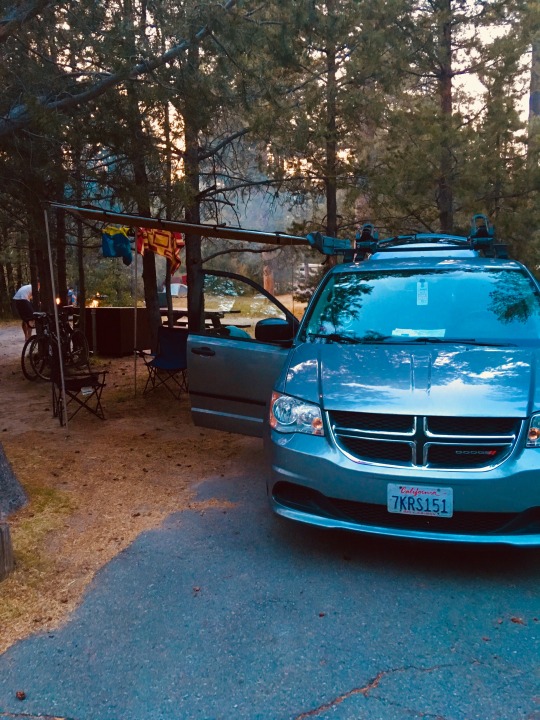
Oliver the campervan
After some paperwork we set off on the road. We stopped at one of the biggest supermarkets that I have ever seen. Very tired by this point it was a struggle to scout the miles of shelves for food and equipment. We spent far too long searching for a coffee-maker (which was probably the only thing in the world this massive supermarket didn’t sell).
We drove out of the city and eventually got too tired to function any more (it was about 5am UK time!!) so we pulled over in a quiet lay-by in the Angeles National Forest and stayed there for the night. (Luxury, I know!)
Lake Tahoe
It was a 400 mile drive to Lake Tahoe. We could distract ourselves from the journey by the scenery as we drove along the Sierra Mountains. We stopped for lunch at the beautiful Mono lake.
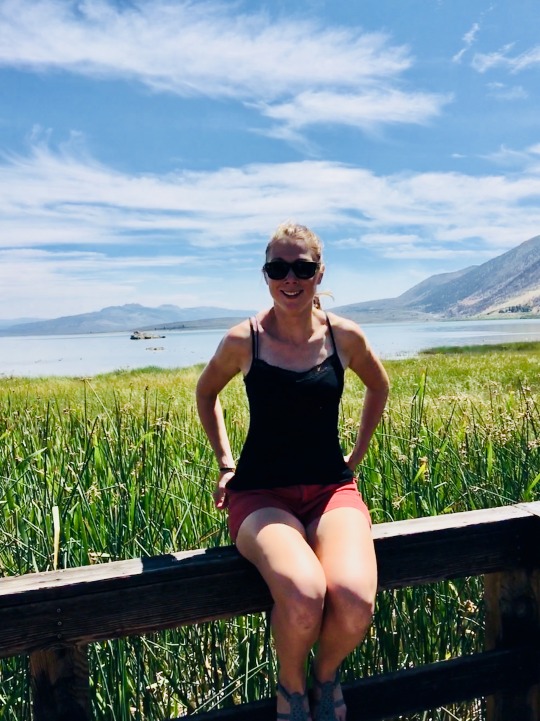
Having an interlude from driving at Mono Lake
We arrived at Lake Tahoe at around 5pm and it was more beautiful that we could have imagined. The biggest bluest lake surrounded by mountains! We were staying at Meeks Bay Campground for 6 nights. It had its own beach and each site had a BBQ and fire pit. We had to put all our food and toiletries in a bear lockers so the bears can’t get hold of anything.

The beautiful lake Tahoe on our loop cycle
The bear thing made me scared of venturing to the toilet block alone in the night for a few days. We never did see a bear in Tahoe though. One morning we did wake up and find the bear locker wide open, however the only thing we found eating our food was a pesky Blue Jay pecking at the loaf of bread! (We must not have closed it properly). The biggest mammal we saw was a beaver swimming in the creek near our campsite. He was a good spot.

The crystal clear lake was beautiful to swim in and we swam most days. The 2nd day we cycled the 70 mile loop of the lake with a cafe stop leaving the hilliest 16 miles to cycle with full bellies and 3 pints of beer each inside us.


Incredibly scenic cycling at Tahoe
We didn’t do too much at strenuous as we were tapering for the Lake Tahoe middle distance triathlon at the weekend. We did some running which I found really difficult - probably due to the 2,600 meter altitude that Meeks Bay was at!! At least we had a few days to acclimatise to the thin air.


Relaxing at the lakeside beach post ride

Pancakes for breakfast!

Checking out the triathlon venue

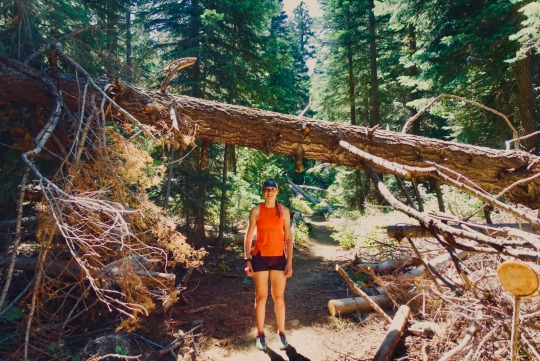
Nathaniel and I during an altitude trail run
Lake Tahoe middle distance triathlon
The morning of the triathlon it was an early wake up at 5am and Nathaniel and I scrabbled around in the cold and dark having cereal and gathering up all I triathlon stuff. It was a short cycle up the road to the triathlon venue.
We had already registered the previous day so we had plenty of time to prepare before the start. Than racked his bike next to me and transition and I guided him where to place his shoes and race belt etc. It was really nice to have him doing a triathlon with me, get we were both quite adamant to beat each other.
It was freezing waiting for the triathlon to start and we found the warmest place to wait for the delayed start was actually in the lake. The gun went off 15 minutes late at 7:15am.
The swim:
It was hard to site the bouys initially due to the sunrise but after the first turn it became easy. The swim was relatively uneventful- apart from losing my swim hat early doors, which I just stuffed down my wetsuit and continued hatless. There was no big groups to draft and I found myself alone for the majority of the swim except when I caught a man up near the end of the swim. I came out the water 6th Overall and 2nd Female. Leaving Nathaniel 15 minutes to claw back.

The bike: After running up a gigantic hill in T1 during the usual fumbling with my wetsuit I was off on my bike. Out on the road there was a guy to pick off. I felt strong on the flat, TTing along on the drops of my road bike. The course consisted of 2 out and back North portion (flat) and 1 our and back portion south (so very hilly). Approaching the turn around point I could see one other woman in front. I overshot the first turn in fact because a competitor in front carried on zooming up the road. I have learnt better than to trust other competitors so did a double take and looked at my distance - this was the turn around point! During the outs and backs I was making some progress against the woman in front and was keep Nathaniel at bay on the flat but it was soon time for the hills... This is when it started to get ugly!! The hills destroyed my legs as I picked off many competitors, only to be over taken again on the long technical descents. My legs began to struggle at the south turn around but I had caught up the woman in 1st place. I overtook her at a pace (proving a point, I guess). I think she must have seen me as a threat as she cycled away at a pace I couldn’t keep on the next hill. I could see Than on my way to T2 - still about 15 minutes behind (It’s out that he had a puncture on the first portion of the hilly section or he would have been sure to eat into my time buffer!)

The run. (A.k.a. The struggle!) After a speedy T2 (I got an applaud from the crowd for my discount and another competitor complemented the speed of my T2), it was time for the run. Heading off like a bat out of hell I began to struggle with my breathing - I needed to check my pace. The path soon turned off the concrete back and soon turned into a technical dirt track and, at one point, even a sandy beach! The air was hot and dry and, now, dusty. I chatted to another competitor, whom later learnt my name and gave me encouragement whenever he saw me. He soon ran off in the distance as I struggled controlling my breathing in the altitude. Exhaustion and altitude forced me to adopt a run-walk strategy. I expected Than to come cruising by any moment - but he never came (i presumed that he was having a worse time than me!). As I approached the finish I was going over scenarios in my head how I could brag to Than about my victory without putting him off another triathlon.

Smiles at the finish line Up the hill to the finish and who should be standing there with a beer but Nathaniel Manning!! I was extremely confused. Maybe he had pulled out?! Nope it transpires that Than was also confused as he had indeed “finished”. Later we discovered that he and some other competitions had missed at 1.5 mile section near the start of the run course which was poorly signed. Than thought I was ahead still and was worried when he looked about at the finish. He apparently also asked the medical tent for me... I’m dubious as he also had time for 3 beers in all this worrying and looking!!... Anyway a record was set - officially my slowest middle distance triathlon at 6 hours and 7 minutes!! Then again it was the hardest middle distance I have ever done. I still kept hold of 2nd female overall and came 1st in my age group. Nathaniel also got a prize for 2nd place in his age group (coming a good 20mins ahead of 3rd so we didn’t confess about the unintentional shortcut!). We were awarded with beer glasses and trucker hats! Cheers. And also Nathaniel is game for another triathlon... yet he still has to complete an actual middle distance triathlon!!
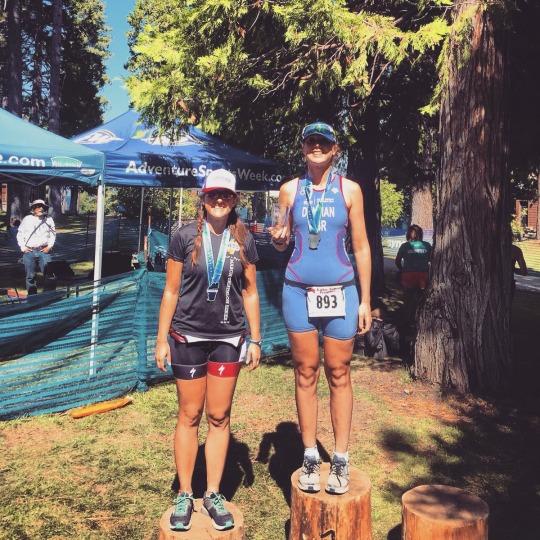

Las Vegas.
Following the triathlon we stayed one more night at the beautiful Meeks Bay and BBQ’d the biggest steak you have ever seen! The morning after we packed up Oliver, the campervan, and drove back south over the mountains and then the vast empty dessert - we were heading to “Las Vegas Baby” (the comment that Than would intermittently yell whilst popping the horn!).
The masses of sky scrappers appeared out of the desert and closer we got the buildings grander and the traffic heavier.
We found the Venetian hotel and waved goodbye to Oliver in the hands of the valet parking. After a long wait to check in we opened the door to the best hotel room I’ve ever stayed in (I’ve lived a sheltered life or maybe it felt it in comparison to our Campervan).
Vegas was everything I expected it to be big, fancy and at the bottom of everything fake. I wanted to give the city a chance.
We had a quick flutter on a slot machine before heading to our dinner reservation at The Cut. It was my treat for Nathaniel’s birthday which I regretted when the bill came - totalling US $500 (a bargain considering there was a wine on the wine list for $24,000!!). However it was the most delicious steak however Nathaniel had to finish it as a migraine had ruined my appetite.

Than and his expensive belated birthday steak
We ended that night with a bit of Blackjack. $100 down I retired to bed.
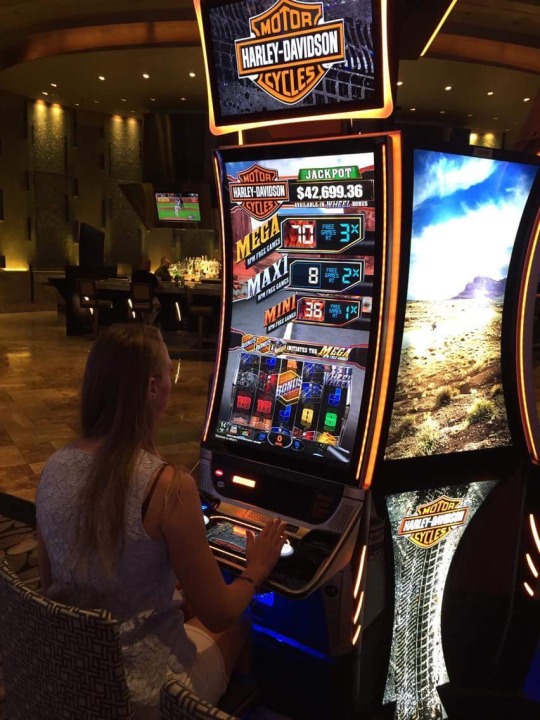
The second day we explored all the lavish casinos, trying our luck with a few chips as we went. We made our way down the strip to the New York New York hotel were he had dinner and watched a Cirque de Soilei show.
The following morning we had went on a tour of the Grand Canyon. Firstly we got to see areal views from the small plane and then driven to 2 different view points. Our photos really don’t do the Canyon justice - it’s size is just incredible! Landing back in Las Vegas we pigged out on the final night in the Bellagio buffet. Apparently the best buffet in the world but I don’t have much to compare it still. But it still being full the majority of the next day if good - then it was!!
Views over the Grand Canyon
Mammoth Lakes.
We decided to visit mammoth lakes on our way to Yosemite. It was a good decision as this place is beautiful. We stayed up from the town at a place called Twin Lakes: aptly named due to the 2 lakes surrounded by granite cliffs and waterfalls.
We easily found a campsite on the first night. However, unbeknown to us, it was a big bank holiday weekend in the USA (labour day) so we were demoted from campsite to car park for the second night.
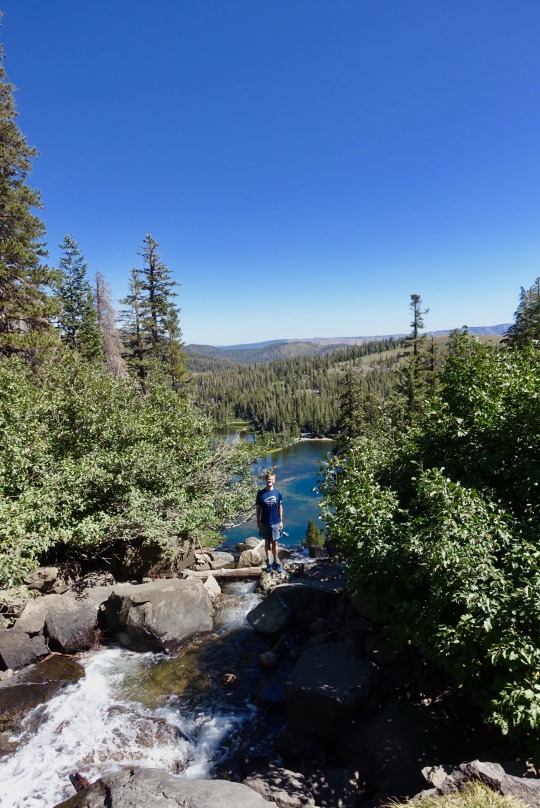
Views from our run in Mammoth
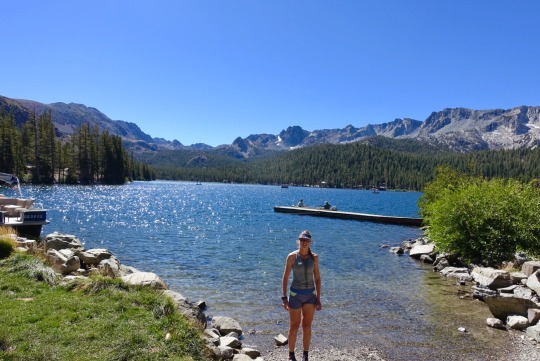
We did a beautiful run from twin lakes to Mary lake and around Horseshoe lake. Then lunch before we cycled up mammoth mountain to the panoramic view point. This tough day deserved beer so we stopped at Mammoth Brewing company tasting rooms. Than came out with a huge tasting platter and we selected our favourite for a few more pints (conscious that we had to cycle 4 miles up hill home!).

Cycling in Mammoth
Than bought me a lovely tankard from the tasting room however I couldn’t hide my disappointment that it wasn’t a mammoth brewing co cycling jersey.
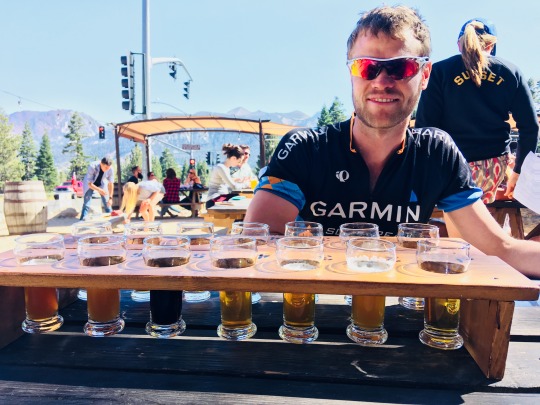
Tasting at Mammoth Brewery
Yosemite National Park.
We were lucky enough to get to camp inside this breath-takingly beautiful National Park and did we make the most of it?!? 74 miles of footpaths and scenery was explored. Our legs ached but we will remember those spectacular views forever.
On our first full day with did a very ambitious 10 mile walk which ended up being 17 hilly miles however we were rewarded by seeing a bear walk across the footpath. A few days later we saw a bobcat on the footpath before he jumped back into the mountain rocks. Along with plenty of deer and birds of prey we have seen a lot of exciting wildlife.
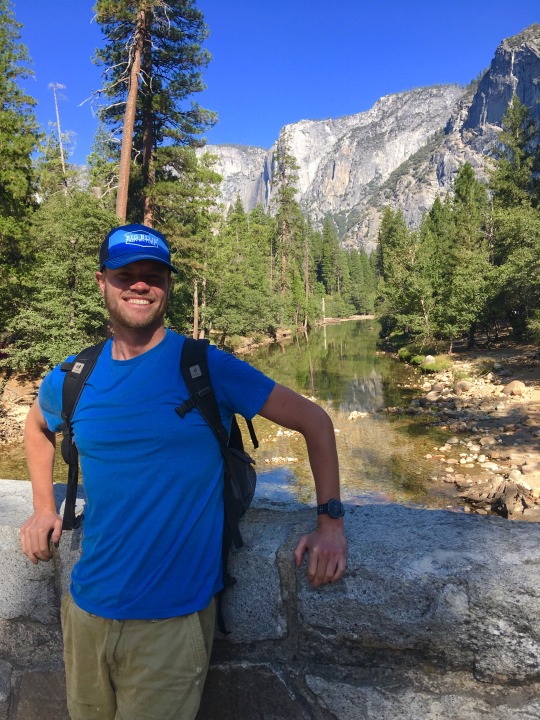
At the river next to the campground
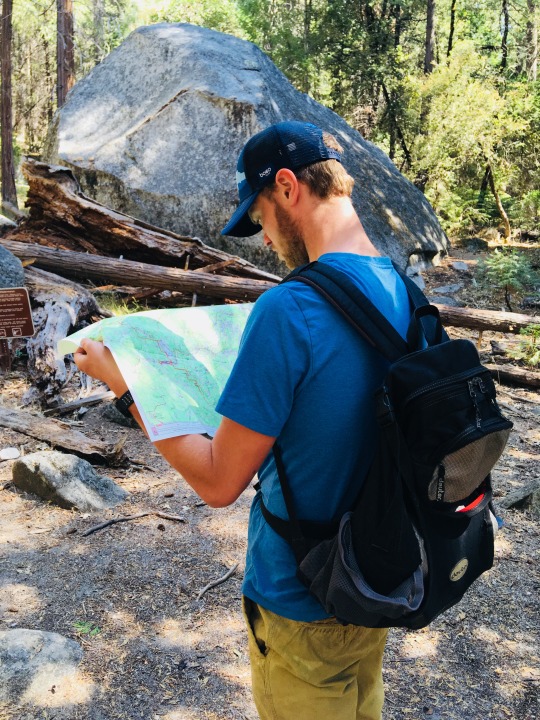
Nathaniel took over map reading after the 17 mile walk we did on the first day (which was supposed to be 10)

Walking up to North Dome (Via Indian rocks)

Half dome in the background
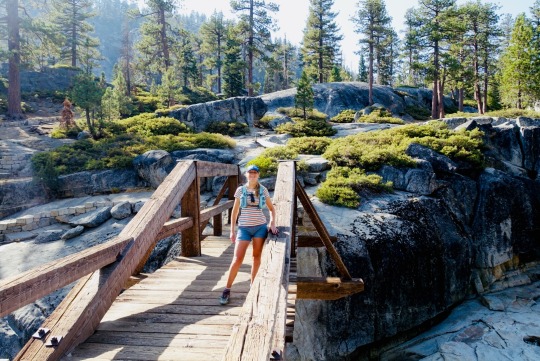
The bridge over Yosemite falls
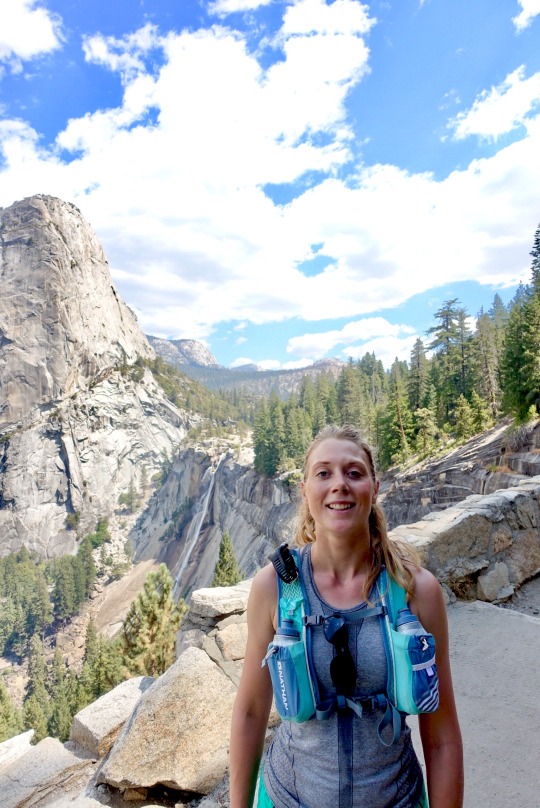
Vernon falls in the background
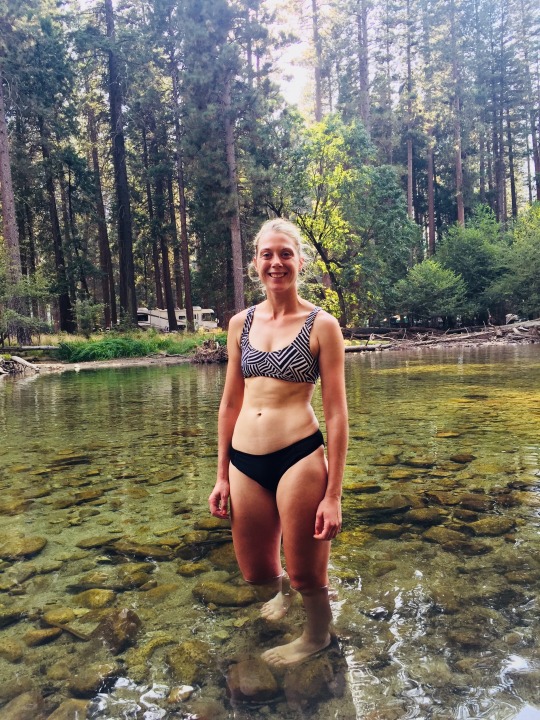
Cooling off after a long walk in the river

Admiring a giant redwood
San Francisco
After 6 days of paradise in Yosemite it was time to continue travelling. Headed to the west Coast for San Francisco. San Francisco is a lively vibrant city which had a cool feel to it.
We swam in a beautiful outdoor lido in the Mission district which was full of lane swimmers and was a joy to swim laps in. We camped near a surfing beach and nature reserve due to the lagoons. During our 2 nights in San Francisco we did plenty of cycling. The first day 50 miles exploring north of the city and finishing with a burger and a pint in Sausilito.

At Alpine dam

Climbs in San Francisco earn you good views

perhaps the most iconic view
The 2nd day we did a 35 mile loop going through Muir wood. Afterwards we cycled over a very busy golden gate bridge with tourists crashing hired bikes constantly!! Over the over side of the bridge we had BBQ and tasting treats at the Presidio picnic before heading down the highway 1 back towards LA.
After taking 2 days to venture down the HW1. Seeing the sea otters at Monterey on the way. We checked into a hotel in LA ready to fly to New Zealand, our next adventure.
0 notes
Text
Weed-killing chemical found in pasta, cereal and cookies sold in Canada: study
New Post has been published on https://cialiscom.org/weed-killing-chemical-found-in-pasta-cereal-and-cookies-sold-in-canada-study.html
Weed-killing chemical found in pasta, cereal and cookies sold in Canada: study
CTVNews.ca Personnel
Posted Sunday, September 9, 2018 10:00PM EDT
Past Up-to-date Sunday, September 9, 2018 10:13PM EDT
From Cheerios to Oreos to chocolate glazed Timbits, a controversial weed-killing chemical has been identified in several popular foods merchandise in Canada.
In a examine commissioned by advocacy team Environmental Defence Canada and independently performed by California-primarily based Anresco Laboratories, 18 common foodstuff things have been analyzed for glyphosate, the lively ingredient of a chemical herbicide sold under the name Roundup and observed in a lot of agricultural and gardening products.
Whilst the issue continues to be hotly contested, several experiments and courtroom cases have joined the widely-employed chemical to most cancers.
In the Environmental Defence Canada research, traces of glyphosate were being identified in many children’s foodstuff and treats bought in Canada, including Kraft Supper Unique macaroni and cheese, Ritz Unique crackers, President’s Choice tortillas, two brand names of hummus, breakfast cereals like Normal Mills’ Cheerios and Kellogg’s Froot Loops as well as Tim Hortons chocolate glazed Timbits and sesame seed bagels. (Scroll down for a total record of the analyzed products and solutions and their glyphosate content)
Of the 18 solutions tested, only 4 did not comprise glyphosate. And while the stages detected were being in pieces for every billion — a minute total which is far below the degrees deemed safe and sound by Wellbeing Canada, which are set in parts per million — the simple fact there are trace amounts of a weed killer in food items in the very first place may perhaps surprise lots of Canadians
Muhannad Malas, Toxics Application Manager at Environmental Defence, claimed the findings recommend that some buyers may be unknowingly ingesting trace quantities of the disputed herbicide several situations a working day.
“When we have proof that a chemical is joined to most cancers, I imagine thoughts want to be raised about, you know, what is a risk-free a limit?” Malas informed CTV Information. “What we’re making an attempt to do in this article is seriously advise Canadians and allow Canadians know that these are the points, that our foodstuff incorporate glyphosate and that glyphosate is a unsafe chemical.”
A controversial chemical
In August, a California jury dominated that the herbicide was directly dependable for producing a man’s terminal cancer. But numerous experiences, such as a single from Health and fitness Canada past year, located that the merchandise poses no health hazards.
Glyphosate is registered for use in extra than 160 nations, making it the most widely-utilised weed killer in the earth. Due to the fact it is sprayed on a assortment of crops — from corn to soybeans to wheat — the chemical can stop up in the harvested content that is applied in meals processing.
Organizations with items named in the Environmental Defence Canada report told CTV News that they followed Overall health Canada recommendations and that their solutions are safe and sound.
Bayer, which bought Roundup maker Monsanto in June, also insists that the chemical poses absolutely no harm.
“Glyphosate has more than a 40-calendar year historical past of safe and sound use. Above people four a long time, scientists have performed a lot more than 800 scientific scientific studies and assessments that prove glyphosate is safe and sound for use,“ Bayer Canada’s Crop Science Division mentioned in a prepared assertion. (The whole text of that assertion has been bundled at the stop of this post.)
The scientific local community is also torn in excess of whether or not ingesting glyphosate is dangerous.
Wellbeing Canada’s most recent examine of glyphosate, in 2017, observed that the herbicide in low concentrations was “unlikely to pose a human cancer risk” and permitted it to be employed for one more 15 yrs.
That conclusion continue to stands, according to the Canadian Foodstuff Inspection Company.
“To date, none of the amounts of glyphosate discovered in solutions as a result of the CFIA surveys have been deemed to be a health and fitness hazard by Health and fitness Canada and no recalls were warranted,” explained spokesperson Karelle Beaudoin in a assertion.
Comparable conclusions have been introduced by the European Meals Security Authority, the European Chemicals Agency, the U.S. Environmental Protection Company and the Australian Pesticides and Veterinary Medications Authority.
Len Ritter, a professor of environmental toxicology at the College of Guelph, described the stage of herbicides in the new report “extraordinarily small.”
“They’re not the kinds of degrees with which we would be involved toxicologically. So what would people today get from this? I think very little at all, fairly frankly,” Ritter reported.
Researching feasible hurt
Some stories, nevertheless, have raised really serious fears about the chemical. In 2015, the Earth Health Organization’s Global Cancer Study Company (IARC) declared that glyphosate is a “probable carcinogen.” California has also additional glyphosate to its listing of chemicals known to result in most cancers. (Aspirin, coffee and aloe vera have also built the listing.)
Other animal-primarily based scientific tests suggest that the chemical can lead to reproductive challenges among mammals and is damaging to bees, fish and rats.
Stephanie Seneff, a senior exploration scientist with the MIT Laptop or computer Science and Synthetic Intelligence Laboratory, has analyzed the prolonged-term outcomes of glyphosate on human wellness. She explained the use of the herbicide as “a gigantic experiment that been heading on for 40 a long time.”
“I see quite sturdy correlations involving the increase in a long checklist of debilitating autoimmune, neurological and oncological disorders exactly in action with the rise in use of glyphosate on core crops,” Seneff explained.
In August, moreover, a San Francisco jury purchased Monsanto to pay out US$289 million to a former school groundskeeper, saying that Roundup contributed to his terminal cancer.
Shares of Bayer, which obtained Monsanto in June, plunged 11 for every cent immediately subsequent the verdict. Bayer verified it was experiencing a lot more than 8,700 similar lawsuits as of Aug. 27.
Dewayne Johnson, the former groundskeeper who had been accidentally doused with the chemical, mentioned the ruling was “way bigger than me.”
“I hope it gets the interest that it demands,” Johnson said adhering to the selection.
Prior research have observed traces of the chemical in human urine, breast milk, beer and various popular foodstuff.
Cereals Canada responds
Farmers close to the globe usually use glyphosate to eliminate weeds and handle pests. But the U.S.-based Environmental Working Group says American farmers are progressively spraying the chemical on oats and some other crops to assistance dry out the crops and harvest them faster.
Grain producers say the herbicide is greatly applied and successful. Cam Dahl, president of Cereals Canada, mentioned it’s crucial to take into account the tiny amount of herbicide observed in the 18 products.
“If folks want to know what a part per billion is, you would have to eat about 36,000 whole loaves of bread in a single working day to get to the allowable every day limit of glyphosate. So these are pretty, incredibly smaller, compact quantities,” Dahl stated.
Field group Food & Shopper Items of Canada (FCPC) also weighed in on the report, calling the glyphosate amounts “significantly below” the government’s protection demands.
“FCPC recognises that glyphosate existence in meals may be of concern to Canadians. We are in standard session with regulatory authorities, academics, and our users to be certain the continued safety of our food items,” explained spokesperson Michelle Kurtz in a statement.
Glyphosate-no cost foodstuff
Despite disagreements about the protection of glyphosate in foodstuff, various providers are now signing up for a expanding trend by actively advertising and marketing glyphosate-absolutely free products. Many of people firms have sought certification from The Detox Job, a California-based team that describes alone as a “research and certification system that encourages transparency in the food items and nutritional supplement industries on the matter of poisonous chemicals.”
“The revelation from WHO’s Intercontinental Agency for Exploration on Most cancers (IARC) in 2015 that glyphosate is a ‘probable carcinogen’ has led to shoppers throughout the world asking for transparency with regards to the concentrations of glyphosate in their food stuff,” the team provides on its website. “The world-wide good results of the Non-GMO food stuff current market has proven that shoppers are pushing for much more and more transparency and pesticides is even increased on their list of fears than GMOs.”
Companies Answer
Corporations with merchandise examined by Environmental Defence Canada, as perfectly as Bayer Canada, responded to queries from CTV Information about the existence of glyphosate.
Sabra Dipping Business, Sabra Classic Hummus
“Producing wholesome, secure, scrumptious food is Sabra’s number 1 precedence and we stand at the rear of our items 100%. We have a comprehensive top quality plan that encourages agricultural most effective tactics, to assure that only the best probable ingredients are utilized in our products and solutions. In specific, we diligently comply with relevant guidelines relating to foods basic safety, such as laws that regulate any attainable pesticide residues.”
Kraft Heinz Canada, Kraft Supper Initial Noodles
“Our solutions are risk-free and comply with Wellbeing Canada’s polices. Wellbeing Canada has also evaluated different products and solutions including commodities like wheat located in pastas and identified no human well being considerations. In reality, as can be found from the report, our merchandise consists of a little share of the amount Wellness Canada considers safe and sound for wheat.”
Mondelez Canada, Ritz Initial Crackers and Oreo Unique Cookies
“Mondelēz Canada is committed to creating the optimum high quality food items feasible. To this conclude we are also aware about potential residues that may be in raw products. To be confident that uncooked products procured by Mondelēz Canada are safe and appropriate for us and our customers, we get the further step to observe our uncooked components to assure that they meet up with correct specs, our very own requirements AND that of the federal government (Food and drug administration, EPA for US & Wellbeing Canada, CFIA for Canada). Also, we maintain our suppliers to those exact same criteria. Importantly, our products which are mentioned in this report are in complete compliance with Health and fitness Canada’s regulations.”
Fontaine Santé, Roasted Garlic Hummus
“We proudly stand by the safety and top quality of our Fontaine Santé products and solutions. Preparing healthful goods is Fontaine Santé’s quantity a person precedence, and we have been accomplishing that for 28+ a long time.
Fontaine Santé will make all normal products working with healthful elements and does not increase any glyphosate in the course of the preparation of its solutions. Glyphosate, is a herbicide that is authorized by regulatory businesses and is normally employed by farmers across the marketplace who implement it pre-harvest.
Fontaine Santé continually evaluates its products portfolio to be certain the maximum high-quality and protection standards for our consumers. Whilst the Fontaine Santé products and solutions comply with all protection and regulatory necessities, we are delighted to be component of the dialogue and are intrigued in collaborating with business peers, regulators and other intrigued get-togethers on glyphosate.”
PepsiCo, Quaker Huge Flake Oats
“We proudly stand by the protection and high quality of our Quaker goods. Producing nutritious, healthful foods is Quaker’s number just one priority, and we’ve been undertaking that for more than 140 decades. Quaker does not incorporate glyphosate during any section of the milling approach. Glyphosate is typically made use of by farmers across the business who implement it pre-harvest. After the oats are transported to us, we set them through our arduous method that extensively cleanses them (de-hulled, cleaned, roasted and flaked). Any concentrations of glyphosate that may well stay are significantly down below any regulatory limitations and very well in just compliance of the protection benchmarks established by Health Canada, the Environmental Protection Agency (EPA) and the European Food Safety Authority (EFSA) as harmless for human consumption. Quaker continually evaluates our merchandise portfolio to guarantee the best high-quality and protection expectations for our buyers. When our solutions comply with all basic safety and regulatory specifications, we are happy to be element of the discussion and are intrigued in collaborating with market peers, regulators and other fascinated events on glyphosate.”
Tim Hortons, chocolate glazed Timbits and sesame seed bagels
“At Tim Hortons, we stand by the integrity of our products and solutions. Almost nothing is much more significant to us than the excellent of the foods we serve our company. In this scenario, Health Canada’s position is obvious: nutritional challenges from foodstuff and drinking water are “not of worry.” We remain committed to functioning with our suppliers to assure our merchandise meet up with the best standards for food items security and good quality.”
Bayer Canada, Crop Science Division
“Environmental Defence Canada is a social motion environmental group that has as just one of its mandates opposing the use of chemical compounds in day to day products and solutions, which includes solutions like glyphosate. Glyphosate is a extensively-utilised and powerful herbicide with a 40-calendar year historical past of risk-free use. Canada’s overall health authorities have extensively reviewed glyphosate and authorized it for use according to label guidelines.
It is not unheard of to discover trace quantities of pesticides in meals since some meals is developed using pesticides, which safeguards crops from bugs, ailment and weeds. Importantly, these concentrations noted by Environmental Protection Canada are not even remotely near to any amount of issue. These figures should be place into significant context:
For chickpea dependent foods, the best noted price was 760 elements for each billion in hummus. At this amount, an grownup would have to take in 28 kg of hummus just about every working day for daily life to arrive at PMRA’s allowable publicity restrict. That’s about a kilogram of hummus each individual hour of each and every day for existence with out sleeping.
For wheat-based mostly meals (744 pieces for each billion in tortillas), an adult would have to consume 28 kg of tortillas just about every working day for the existence to achieve PMRA’s allowable publicity limit. Which is 430 tortillas per working day. Every day.
Regulatory authorities have stringent rules when it will come to pesticide residues. Health Canada’s Pest Administration Regulatory Company (PMRA) and the U.S. Environmental Security Company (EPA), for illustration, established daily publicity limitations at least 100 instances under levels clearly show to have no detrimental influence in basic safety research. Health Canada has evidently stated there is no threat from feeding on conventionally-grown foods for the reason that of pesticide residues.
Glyphosate has far more than a 40-yr record of protected use. In excess of all those four a long time, researchers have executed a lot more than 800 scientific scientific studies and testimonials that establish glyphosate is safe and sound for use.“
With a report from CTV’s professional medical affairs expert Avis Favaro and producer Elizabeth St. Philip
Comprehensive record of the tested merchandise and their glyphosate content material
(perform(d, s, id) var js, fjs = d.getElementsByTagName(s)[0] if (d.getElementById(id)) return js = d.createElement(s) js.id = id js.src = "http://hook up.facebook.internet/en_US/sdk.js#xfbml=1&variation=v2.11&appId=152734284797770" fjs.parentNode.insertBefore(js, fjs) (document, 'script', 'facebook-jssdk'))(purpose(d, s, id) var js, fjs = d.getElementsByTagName(s)[0] if (d.getElementById(id)) return js = d.createElement(s) js.id = id js.src = "http://connect.fb.net/en_US/sdk.js#xfbml=1&model=v2.3&appId=152734284797770" fjs.parentNode.insertBefore(js, fjs) (doc, 'script', 'facebook-jssdk')) Supply hyperlink
0 notes
Text
The South Pole
I RUSHED UP onto the platform. Yes, open sea! Barely a few sparse floes, some moving icebergs; a sea stretching into the distance; hosts of birds in the air and myriads of fish under the waters, which varied from intense blue to olive green depending on the depth. The thermometer marked 3 degrees centigrade. It was as if a comparative springtime had been locked up behind that Ice Bank, whose distant masses were outlined on the northern horizon. "Are we at the pole?" I asked the captain, my heart pounding. "I've no idea," he answered me. "At noon we'll fix our position." "But will the sun show through this mist?" I said, staring at the grayish sky. "No matter how faintly it shines, it will be enough for me," the captain replied. To the south, ten miles from the Nautilus, a solitary islet rose to a height of 200 meters. We proceeded toward it, but cautiously, because this sea could have been strewn with reefs. In an hour we had reached the islet. Two hours later we had completed a full circle around it. It measured four to five miles in circumference. A narrow channel separated it from a considerable shore, perhaps a continent whose limits we couldn't see. The existence of this shore seemed to bear out Commander Maury's hypotheses. In essence, this ingenious American has noted that between the South Pole and the 60th parallel, the sea is covered with floating ice of dimensions much greater than any found in the north Atlantic. From this fact he drew the conclusion that the Antarctic Circle must contain considerable shores, since icebergs can't form on the high seas but only along coastlines. According to his calculations, this frozen mass enclosing the southernmost pole forms a vast ice cap whose width must reach 4,000 kilometers. Meanwhile, to avoid running aground, the Nautilus halted three cable lengths from a strand crowned by superb piles of rocks. The skiff was launched to sea. Two crewmen carrying instruments, the captain, Conseil, and I were on board. It was ten o'clock in the morning. I hadn't seen Ned Land. No doubt, in the presence of the South Pole, the Canadian hated having to eat his words. A few strokes of the oar brought the skiff to the sand, where it ran aground. Just as Conseil was about to jump ashore, I held him back. "Sir," I told Captain Nemo, "to you belongs the honor of first setting foot on this shore." "Yes, sir," the captain replied, "and if I have no hesitation in treading this polar soil, it's because no human being until now has left a footprint here." So saying, he leaped lightly onto the sand. His heart must have been throbbing with intense excitement. He scaled an overhanging rock that ended in a small promontory and there, mute and motionless, with crossed arms and blazing eyes, he seemed to be laying claim to these southernmost regions. After spending five minutes in this trance, he turned to us. "Whenever you're ready, sir," he called to me. I got out, Conseil at my heels, leaving the two men in the skiff. Over an extensive area, the soil consisted of that igneous gravel called "tuff," reddish in color as if made from crushed bricks. The ground was covered with slag, lava flows, and pumice stones. Its volcanic origin was unmistakable. In certain localities thin smoke holes gave off a sulfurous odor, showing that the inner fires still kept their wide-ranging power. Nevertheless, when I scaled a high escarpment, I could see no volcanoes within a radius of several miles. In these Antarctic districts, as is well known, Sir James Clark Ross had found the craters of Mt. Erebus and Mt. Terror in fully active condition on the 167th meridian at latitude 77 degrees 32'. The vegetation on this desolate continent struck me as quite limited. A few lichens of the species Usnea melanoxanthra sprawled over the black rocks. The whole meager flora of this region consisted of certain microscopic buds, rudimentary diatoms made up of a type of cell positioned between two quartz-rich shells, plus long purple and crimson fucus plants, buoyed by small air bladders and washed up on the coast by the surf. The beach was strewn with mollusks: small mussels, limpets, smooth heart-shaped cockles, and especially some sea butterflies with oblong, membrane-filled bodies whose heads are formed from two rounded lobes. I also saw myriads of those northernmost sea butterflies three centimeters long, which a baleen whale can swallow by the thousands in one gulp. The open waters at the shoreline were alive with these delightful pteropods, true butterflies of the sea. Among other zoophytes present in these shallows, there were a few coral tree forms that, according to Sir James Clark Ross, live in these Antarctic seas at depths as great as 1,000 meters; then small alcyon coral belonging to the species Procellaria pelagica, also a large number of starfish unique to these climes, plus some feather stars spangling the sand. But it was in the air that life was superabundant. There various species of birds flew and fluttered by the thousands, deafening us with their calls. Crowding the rocks, other fowl watched without fear as we passed and pressed familiarly against our feet. These were auks, as agile and supple in water, where they are sometimes mistaken for fast bonito, as they are clumsy and heavy on land. They uttered outlandish calls and participated in numerous public assemblies that featured much noise but little action. Among other fowl I noted some sheathbills from the wading-bird family, the size of pigeons, white in color, the beak short and conical, the eyes framed by red circles. Conseil laid in a supply of them, because when they're properly cooked, these winged creatures make a pleasant dish. In the air there passed sooty albatross with four-meter wingspans, birds aptly dubbed "vultures of the ocean," also gigantic petrels including several with arching wings, enthusiastic eaters of seal that are known as quebrantahuesos,* and cape pigeons, a sort of small duck, the tops of their bodies black and white - in short, a whole series of petrels, some whitish with wings trimmed in brown, others blue and exclusive to these Antarctic seas, the former "so oily," I told Conseil, "that inhabitants of the Faroe Islands simply fit the bird with a wick, then light it up." *Spanish: "ospreys." Ed. "With that minor addition," Conseil replied, "these fowl would make perfect lamps! After this, we should insist that nature equip them with wicks in advance!" Half a mile farther on, the ground was completely riddled with penguin nests, egg-laying burrows from which numerous birds emerged. Later Captain Nemo had hundreds of them hunted because their black flesh is highly edible. They brayed like donkeys. The size of a goose with slate-colored bodies, white undersides, and lemon-colored neck bands, these animals let themselves be stoned to death without making any effort to get away. Meanwhile the mists didn't clear, and by eleven o'clock the sun still hadn't made an appearance. Its absence disturbed me. Without it, no sights were possible. Then how could we tell whether we had reached the pole? When I rejoined Captain Nemo, I found him leaning silently against a piece of rock and staring at the sky. He seemed impatient, baffled. But what could we do? This daring and powerful man couldn't control the sun as he did the sea. Noon arrived without the orb of day appearing for a single instant. You couldn't even find its hiding place behind the curtain of mist. And soon this mist began to condense into snow. "Until tomorrow," the captain said simply; and we went back to the Nautilus, amid flurries in the air. During our absence the nets had been spread, and I observed with fascination the fish just hauled on board. The Antarctic seas serve as a refuge for an extremely large number of migratory fish that flee from storms in the subpolar zones, in truth only to slide down the gullets of porpoises and seals. I noted some one-decimeter southern bullhead, a species of whitish cartilaginous fish overrun with bluish gray stripes and armed with stings, then some Antarctic rabbitfish three feet long, the body very slender, the skin a smooth silver white, the head rounded, the topside furnished with three fins, the snout ending in a trunk that curved back toward the mouth. I sampled its flesh but found it tasteless, despite Conseil's views, which were largely approving. The blizzard lasted until the next day. It was impossible to stay on the platform. From the lounge, where I was writing up the incidents of this excursion to the polar continent, I could hear the calls of petrel and albatross cavorting in the midst of the turmoil. The Nautilus didn't stay idle, and cruising along the coast, it advanced some ten miles farther south amid the half light left by the sun as it skimmed the edge of the horizon. The next day, March 20, it stopped snowing. The cold was a little more brisk. The thermometer marked -2 degrees centigrade. The mist had cleared, and on that day I hoped our noon sights could be accomplished. Since Captain Nemo hadn't yet appeared, only Conseil and I were taken ashore by the skiff. The soil's nature was still the same: volcanic. Traces of lava, slag, and basaltic rock were everywhere, but I couldn't find the crater that had vomited them up. There as yonder, myriads of birds enlivened this part of the polar continent. But they had to share their dominion with huge herds of marine mammals that looked at us with gentle eyes. These were seals of various species, some stretched out on the ground, others lying on drifting ice floes, several leaving or reentering the sea. Having never dealt with man, they didn't run off at our approach, and I counted enough of them thereabouts to provision a couple hundred ships. "Ye gods," Conseil said, "it's fortunate that Ned Land didn't come with us!" "Why so, Conseil?" "Because that madcap hunter would kill every animal here." "Every animal may be overstating it, but in truth I doubt we could keep our Canadian friend from harpooning some of these magnificent cetaceans. Which would be an affront to Captain Nemo, since he hates to slay harmless beasts needlessly." "He's right." "Certainly, Conseil. But tell me, haven't you finished classifying these superb specimens of marine fauna?" "Master is well aware," Conseil replied, "that I'm not seasoned in practical application. When master has told me these animals' names . . ." "They're seals and walruses." "Two genera," our scholarly Conseil hastened to say, "that belong to the family Pinnipedia, order Carnivora, group Unguiculata, subclass Monodelphia, class Mammalia, branch Vertebrata." "Very nice, Conseil," I replied, "but these two genera of seals and walruses are each divided into species, and if I'm not mistaken, we now have a chance to actually look at them. Let's." It was eight o'clock in the morning. We had four hours to ourselves before the sun could be productively observed. I guided our steps toward a huge bay that made a crescent-shaped incision in the granite cliffs along the beach. There, all about us, I swear that the shores and ice floes were crowded with marine mammals as far as the eye could see, and I involuntarily looked around for old Proteus, that mythological shepherd who guarded King Neptune's immense flocks. To be specific, these were seals. They formed distinct male-and-female groups, the father watching over his family, the mother suckling her little ones, the stronger youngsters emancipated a few paces away. When these mammals wanted to relocate, they moved in little jumps made by contracting their bodies, clumsily helped by their imperfectly developed flippers, which, as with their manatee relatives, form actual forearms. In the water, their ideal element, I must say these animals swim wonderfully thanks to their flexible backbones, narrow pelvises, close-cropped hair, and webbed feet. Resting on shore, they assumed extremely graceful positions. Consequently, their gentle features, their sensitive expressions equal to those of the loveliest women, their soft, limpid eyes, their charming poses, led the ancients to glorify them by metamorphosing the males into sea gods and the females into mermaids. I drew Conseil's attention to the considerable growth of the cerebral lobes found in these intelligent cetaceans. No mammal except man has more abundant cerebral matter. Accordingly, seals are quite capable of being educated; they make good pets, and together with certain other naturalists, I think these animals can be properly trained to perform yeoman service as hunting dogs for fishermen. Most of these seals were sleeping on the rocks or the sand. Among those properly termed seals - which have no external ears, unlike sea lions whose ears protrude - I observed several varieties of the species stenorhynchus, three meters long, with white hair, bulldog heads, and armed with ten teeth in each jaw: four incisors in both the upper and lower, plus two big canines shaped like the fleur-de-lis. Among them slithered some sea elephants, a type of seal with a short, flexible trunk; these are the giants of the species, with a circumference of twenty feet and a length of ten meters. They didn't move as we approached. "Are these animals dangerous?" Conseil asked me. "Only if they're attacked," I replied. "But when these giant seals defend their little ones, their fury is dreadful, and it isn't rare for them to smash a fisherman's longboat to bits." "They're within their rights," Conseil answered. "I don't say nay." Two miles farther on, we were stopped by a promontory that screened the bay from southerly winds. It dropped straight down to the sea, and surf foamed against it. From beyond this ridge there came fearsome bellows, such as a herd of cattle might produce. "Gracious," Conseil put in, "a choir of bulls?" "No," I said, "a choir of walruses." "Are they fighting with each other?" "Either fighting or playing." "With all due respect to master, this we must see." "Then see it we must, Conseil." And there we were, climbing these blackish rocks amid sudden landslides and over stones slippery with ice. More than once I took a tumble at the expense of my backside. Conseil, more cautious or more stable, barely faltered and would help me up, saying: "If master's legs would kindly adopt a wider stance, master will keep his balance." Arriving at the topmost ridge of this promontory, I could see vast white plains covered with walruses. These animals were playing among themselves. They were howling not in anger but in glee. Walruses resemble seals in the shape of their bodies and the arrangement of their limbs. But their lower jaws lack canines and incisors, and as for their upper canines, they consist of two tusks eighty centimeters long with a circumference of thirty-three centimeters at the socket. Made of solid ivory, without striations, harder than elephant tusks, and less prone to yellowing, these teeth are in great demand. Accordingly, walruses are the victims of a mindless hunting that soon will destroy them all, since their hunters indiscriminately slaughter pregnant females and youngsters, and over 4,000 individuals are destroyed annually. Passing near these unusual animals, I could examine them at my leisure since they didn't stir. Their hides were rough and heavy, a tan color leaning toward a reddish brown; their coats were short and less than abundant. Some were four meters long. More tranquil and less fearful than their northern relatives, they posted no sentinels on guard duty at the approaches to their campsite. After examining this community of walruses, I decided to return in my tracks. It was eleven o'clock, and if Captain Nemo found conditions favorable for taking his sights, I wanted to be present at the operation. But I held no hopes that the sun would make an appearance that day. It was hidden from our eyes by clouds squeezed together on the horizon. Apparently the jealous orb didn't want to reveal this inaccessible spot on the globe to any human being. Yet I decided to return to the Nautilus. We went along a steep, narrow path that ran over the cliff's summit. By 11:30 we had arrived at our landing place. The beached skiff had brought the captain ashore. I spotted him standing on a chunk of basalt. His instruments were beside him. His eyes were focused on the northern horizon, along which the sun was sweeping in its extended arc. I found a place near him and waited without speaking. Noon arrived, and just as on the day before, the sun didn't put in an appearance. It was sheer bad luck. Our noon sights were still lacking. If we couldn't obtain them tomorrow, we would finally have to give up any hope of fixing our position. In essence, it was precisely March 20. Tomorrow, the 21st, was the day of the equinox; the sun would disappear below the horizon for six months not counting refraction, and after its disappearance the long polar night would begin. Following the September equinox, the sun had emerged above the northerly horizon, rising in long spirals until December 21. At that time, the summer solstice of these southernmost districts, the sun had started back down, and tomorrow it would cast its last rays. I shared my thoughts and fears with Captain Nemo. "You're right, Professor Aronnax," he told me. "If I can't take the sun's altitude tomorrow, I won't be able to try again for another six months. But precisely because sailors' luck has led me into these seas on March 21, it will be easy to get our bearings if the noonday sun does appear before our eyes." "Why easy, captain?" "Because when the orb of day sweeps in such long spirals, it's difficult to measure its exact altitude above the horizon, and our instruments are open to committing serious errors." "Then what can you do?" "I use only my chronometer," Captain Nemo answered me. "At noon tomorrow, March 21, if, after accounting for refraction, the sun's disk is cut exactly in half by the northern horizon, that will mean I'm at the South Pole." "Right," I said. "Nevertheless, it isn't mathematically exact proof, because the equinox needn't fall precisely at noon." "No doubt, sir, but the error will be under 100 meters, and that's close enough for us. Until tomorrow then." Captain Nemo went back on board. Conseil and I stayed behind until five o'clock, surveying the beach, observing and studying. The only unusual object I picked up was an auk's egg of remarkable size, for which a collector would have paid more than 1,000 francs. Its cream-colored tint, plus the streaks and markings that decorated it like so many hieroglyphics, made it a rare trinket. I placed it in Conseil's hands, and holding it like precious porcelain from China, that cautious, sure-footed lad got it back to the Nautilus in one piece. There I put this rare egg inside one of the glass cases in the museum. I ate supper, feasting with appetite on an excellent piece of seal liver whose flavor reminded me of pork. Then I went to bed; but not without praying, like a good Hindu, for the favors of the radiant orb. The next day, March 21, bright and early at five o'clock in the morning, I climbed onto the platform. I found Captain Nemo there. "The weather is clearing a bit," he told me. "I have high hopes. After breakfast we'll make our way ashore and choose an observation post." This issue settled, I went to find Ned Land. I wanted to take him with me. The obstinate Canadian refused, and I could clearly see that his tight-lipped mood and his bad temper were growing by the day. Under the circumstances I ultimately wasn't sorry that he refused. In truth, there were too many seals ashore, and it would never do to expose this impulsive fisherman to such temptations. Breakfast over, I made my way ashore. The Nautilus had gone a few more miles during the night. It lay well out, a good league from the coast, which was crowned by a sharp peak 400 to 500 meters high. In addition to me, the skiff carried Captain Nemo, two crewmen, and the instruments - in other words, a chronometer, a spyglass, and a barometer. During our crossing I saw numerous baleen whales belonging to the three species unique to these southernmost seas: the bowhead whale (or "right whale," according to the English), which has no dorsal fin; the humpback whale from the genus Balaenoptera (in other words, "winged whales"), beasts with wrinkled bellies and huge whitish fins that, genus name regardless, do not yet form wings; and the finback whale, yellowish brown, the swiftest of all cetaceans. This powerful animal is audible from far away when it sends up towering spouts of air and steam that resemble swirls of smoke. Herds of these different mammals were playing about in the tranquil waters, and I could easily see that this Antarctic polar basin now served as a refuge for those cetaceans too relentlessly pursued by hunters. I also noted long, whitish strings of salps, a type of mollusk found in clusters, and some jellyfish of large size that swayed in the eddies of the billows. By nine o'clock we had pulled up to shore. The sky was growing brighter. Clouds were fleeing to the south. Mists were rising from the cold surface of the water. Captain Nemo headed toward the peak, which he no doubt planned to make his observatory. It was an arduous climb over sharp lava and pumice stones in the midst of air often reeking with sulfurous fumes from the smoke holes. For a man out of practice at treading land, the captain scaled the steepest slopes with a supple agility I couldn't equal, and which would have been envied by hunters of Pyrenees mountain goats. It took us two hours to reach the summit of this half-crystal, half-basalt peak. From there our eyes scanned a vast sea, which scrawled its boundary line firmly against the background of the northern sky. At our feet: dazzling tracts of white. Over our heads: a pale azure, clear of mists. North of us: the sun's disk, like a ball of fire already cut into by the edge of the horizon. From the heart of the waters: jets of liquid rising like hundreds of magnificent bouquets. Far off, like a sleeping cetacean: the Nautilus. Behind us to the south and east: an immense shore, a chaotic heap of rocks and ice whose limits we couldn't see. Arriving at the summit of this peak, Captain Nemo carefully determined its elevation by means of his barometer, since he had to take this factor into account in his noon sights. At 11:45 the sun, by then seen only by refraction, looked like a golden disk, dispersing its last rays over this deserted continent and down to these seas not yet plowed by the ships of man. Captain Nemo had brought a spyglass with a reticular eyepiece, which corrected the sun's refraction by means of a mirror, and he used it to observe the orb sinking little by little along a very extended diagonal that reached below the horizon. I held the chronometer. My heart was pounding mightily. If the lower half of the sun's disk disappeared just as the chronometer said noon, we were right at the pole. "Noon!" I called. "The South Pole!" Captain Nemo replied in a solemn voice, handing me the spyglass, which showed the orb of day cut into two exactly equal parts by the horizon. I stared at the last rays wreathing this peak, while shadows were gradually climbing its gradients. Just then, resting his hand on my shoulder, Captain Nemo said to me: "In 1600, sir, the Dutchman Gheritk was swept by storms and currents, reaching latitude 64 degrees south and discovering the South Shetland Islands. On January 17, 1773, the famous Captain Cook went along the 38th meridian, arriving at latitude 67 degrees 30'; and on January 30, 1774, along the 109th meridian, he reached latitude 71 degrees 15'. In 1819 the Russian Bellinghausen lay on the 69th parallel, and in 1821 on the 66th at longitude 111 degrees west. In 1820 the Englishman Bransfield stopped at 65 degrees. That same year the American Morrel, whose reports are dubious, went along the 42nd meridian, finding open sea at latitude 70 degrees 14'. In 1825 the Englishman Powell was unable to get beyond 62 degrees. That same year a humble seal fisherman, the Englishman Weddell, went as far as latitude 72 degrees 14' on the 35th meridian, and as far as 74 degrees 15' on the 36th. In 1829 the Englishman Forster, commander of the Chanticleer, laid claim to the Antarctic continent in latitude 63 degrees 26' and longitude 66 degrees 26'. On February 1, 1831, the Englishman Biscoe discovered Enderby Land at latitude 68 degrees 50', Adelaide Land at latitude 67 degrees on February 5, 1832, and Graham Land at latitude 64 degrees 45' on February 21. In 1838 the Frenchman Dumont d'Urville stopped at the Ice Bank in latitude 62 degrees 57', sighting the Louis-Philippe Peninsula; on January 21 two years later, at a new southerly position of 66 degrees 30', he named the Adelie Coast and eight days later, the Clarie Coast at 64 degrees 40'. In 1838 the American Wilkes advanced as far as the 69th parallel on the 100th meridian. In 1839 the Englishman Balleny discovered the Sabrina Coast at the edge of the polar circle. Lastly, on January 12, 1842, with his ships, the Erebus and the Terror, the Englishman Sir James Clark Ross found Victoria Land in latitude 70 degrees 56' and longitude 171 degrees 7' east; on the 23rd of that same month, he reached the 74th parallel, a position denoting the Farthest South attained until then; on the 27th he lay at 76 degrees 8'; on the 28th at 77 degrees 32'; on February 2 at 78 degrees 4'; and late in 1842 he returned to 71 degrees but couldn't get beyond it. Well now! In 1868, on this 21st day of March, I myself, Captain Nemo, have reached the South Pole at 90 degrees, and I hereby claim this entire part of the globe, equal to one-sixth of the known continents." "In the name of which sovereign, captain?" "In my own name, sir!" So saying, Captain Nemo unfurled a black flag bearing a gold "N" on its quartered bunting. Then, turning toward the orb of day, whose last rays were licking at the sea's horizon: "Farewell, O sun!" he called. "Disappear, O radiant orb! Retire beneath this open sea, and let six months of night spread their shadows over my new domains!"
0 notes